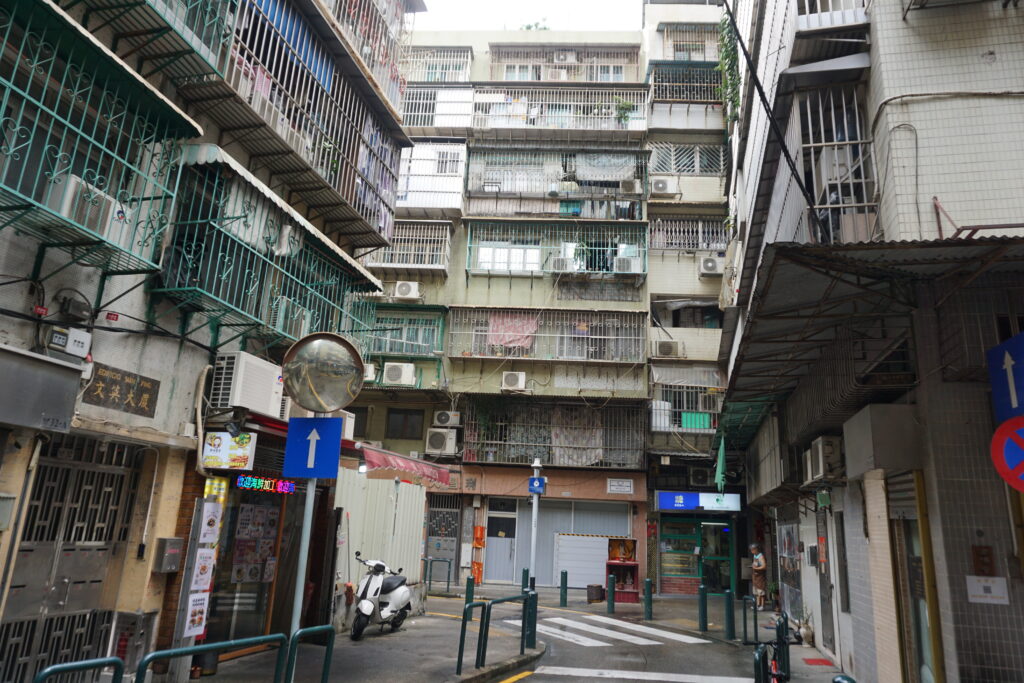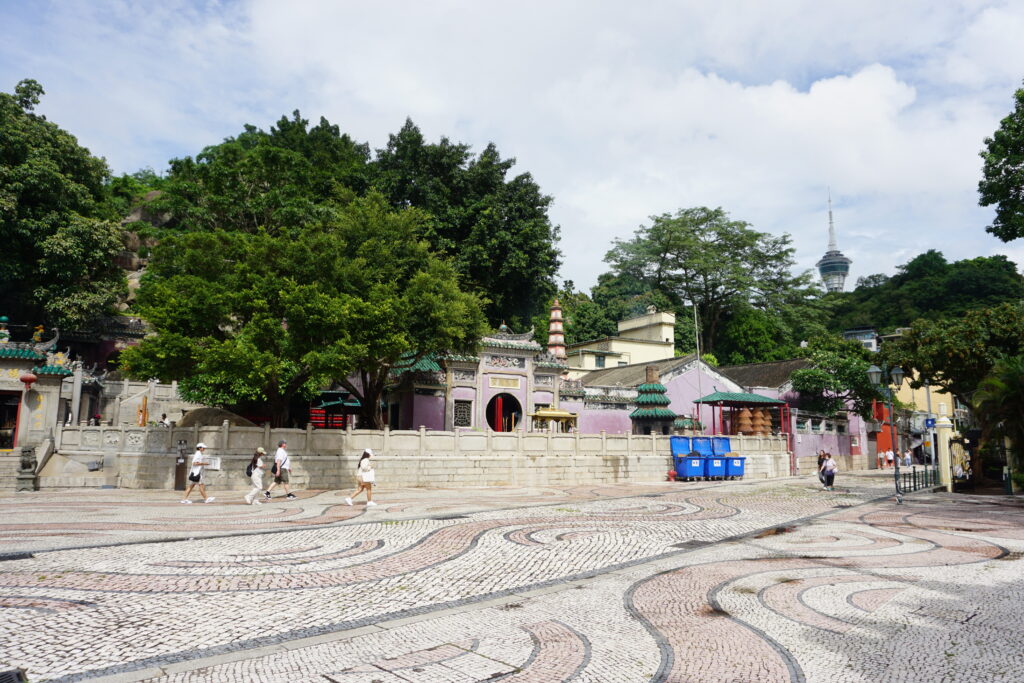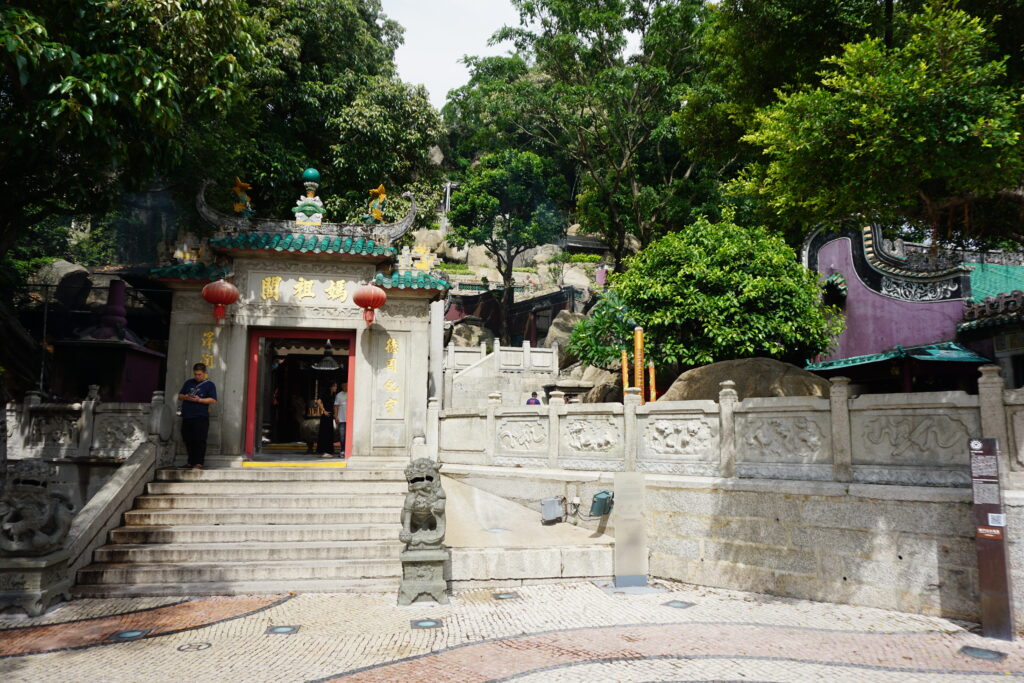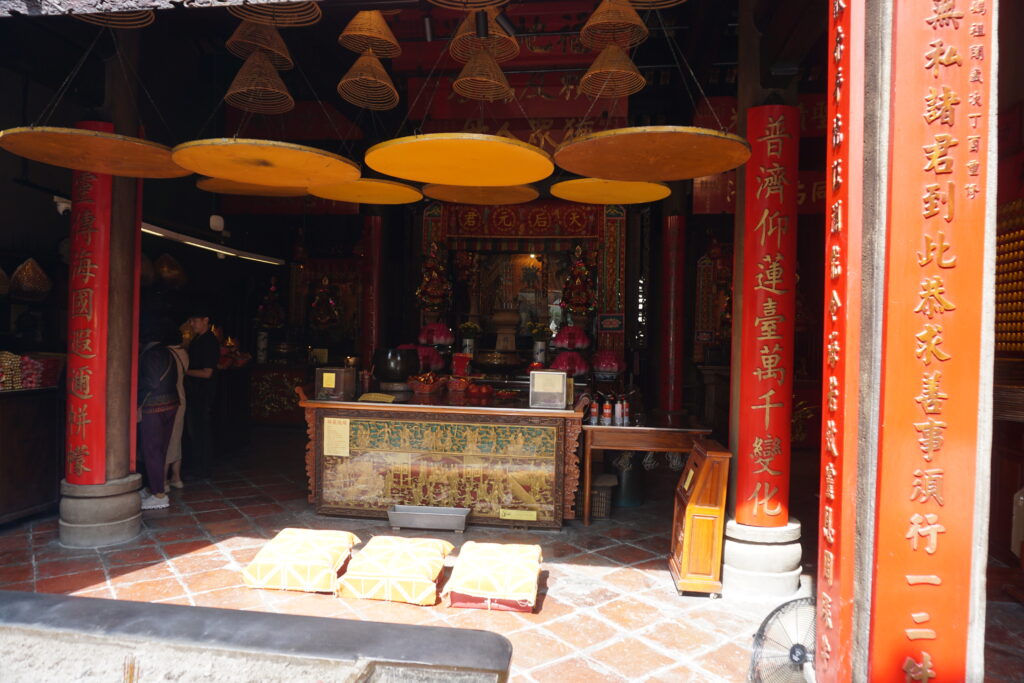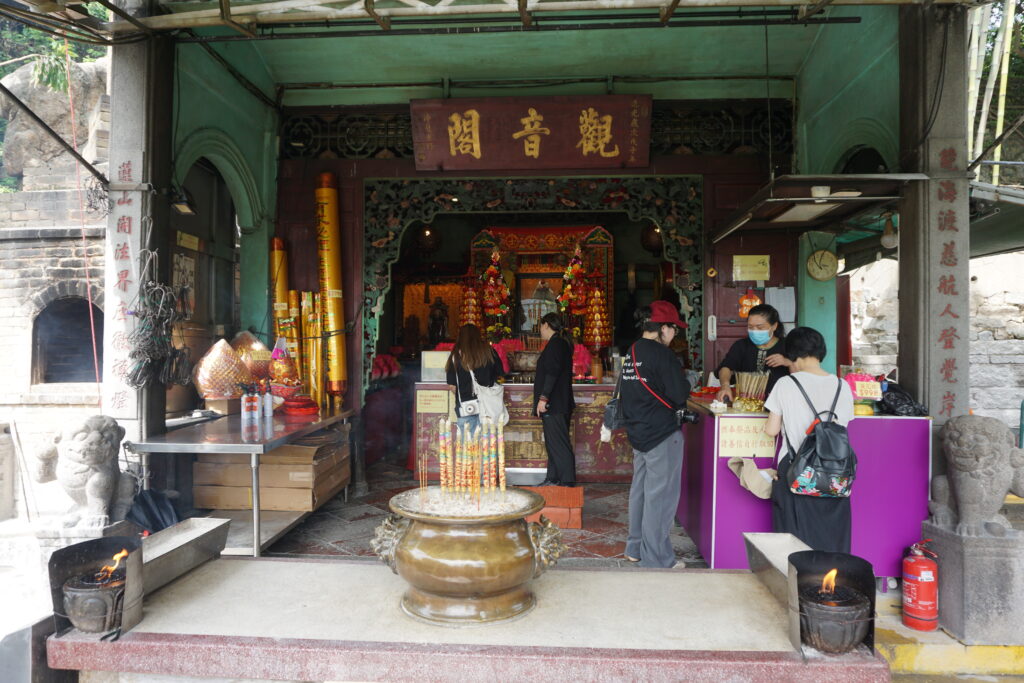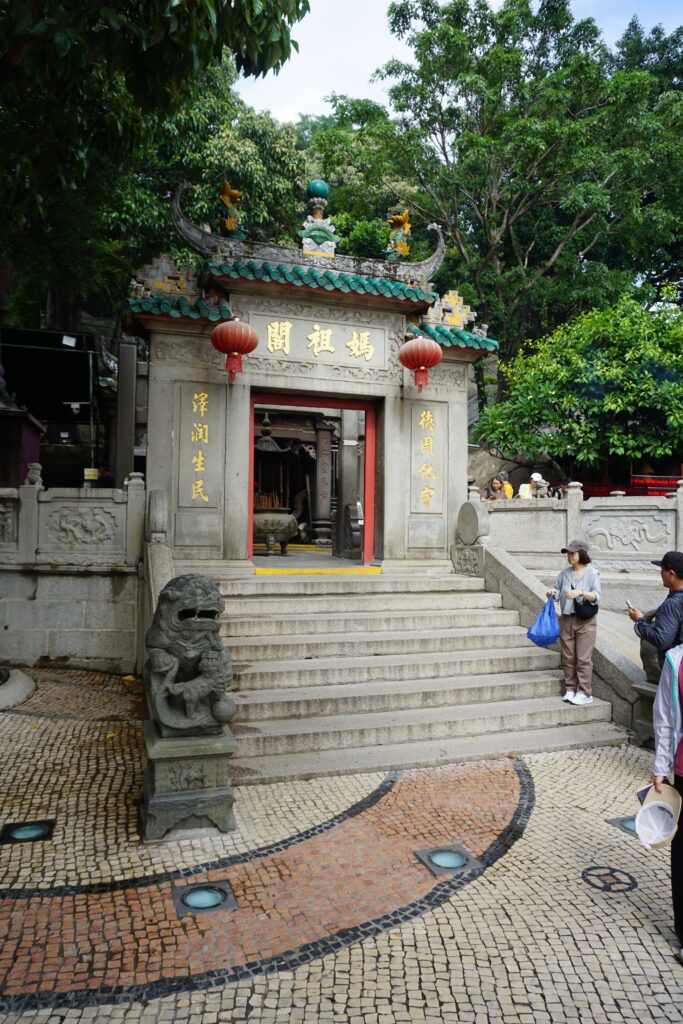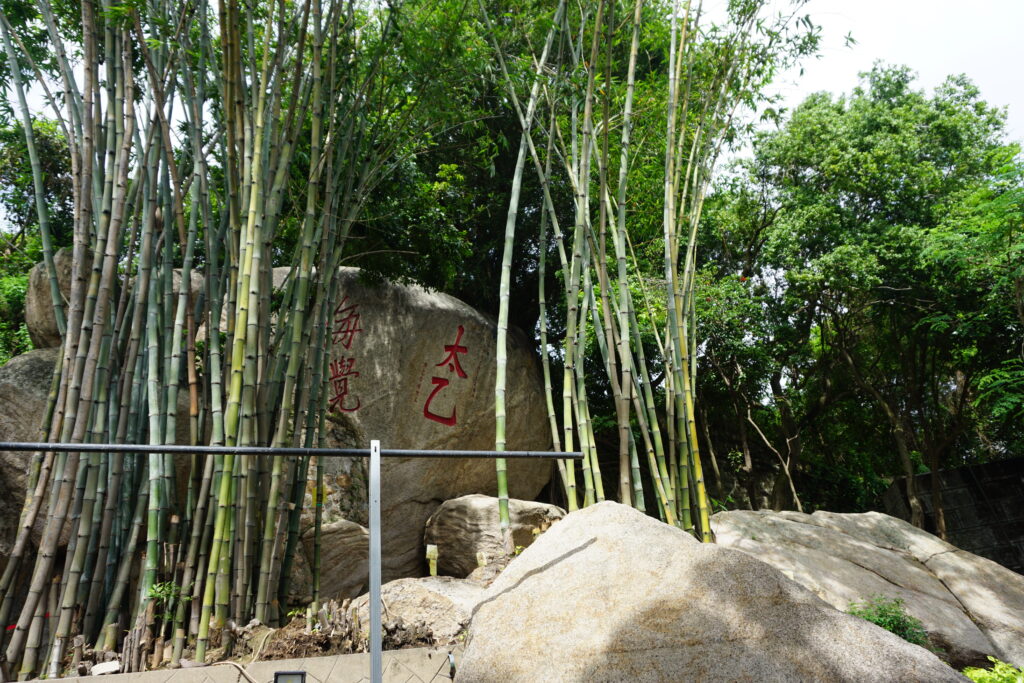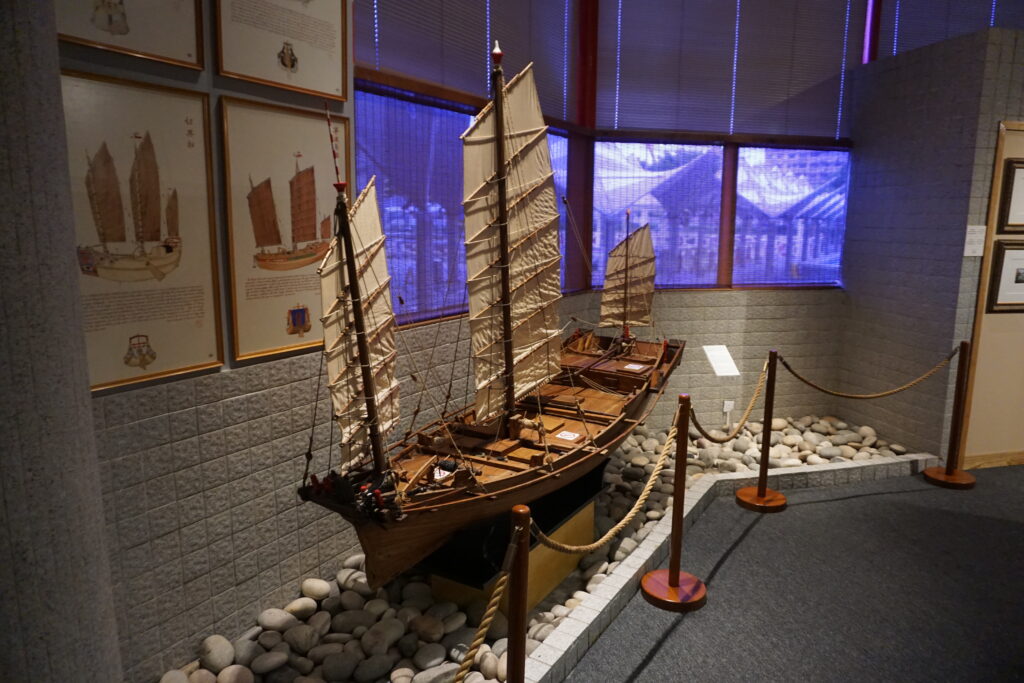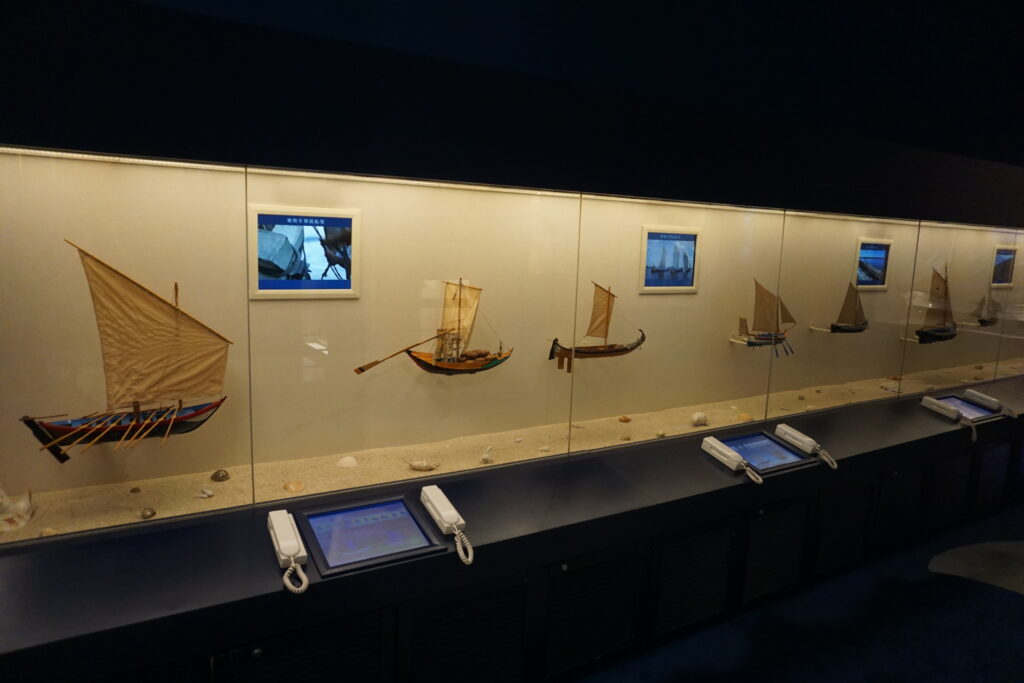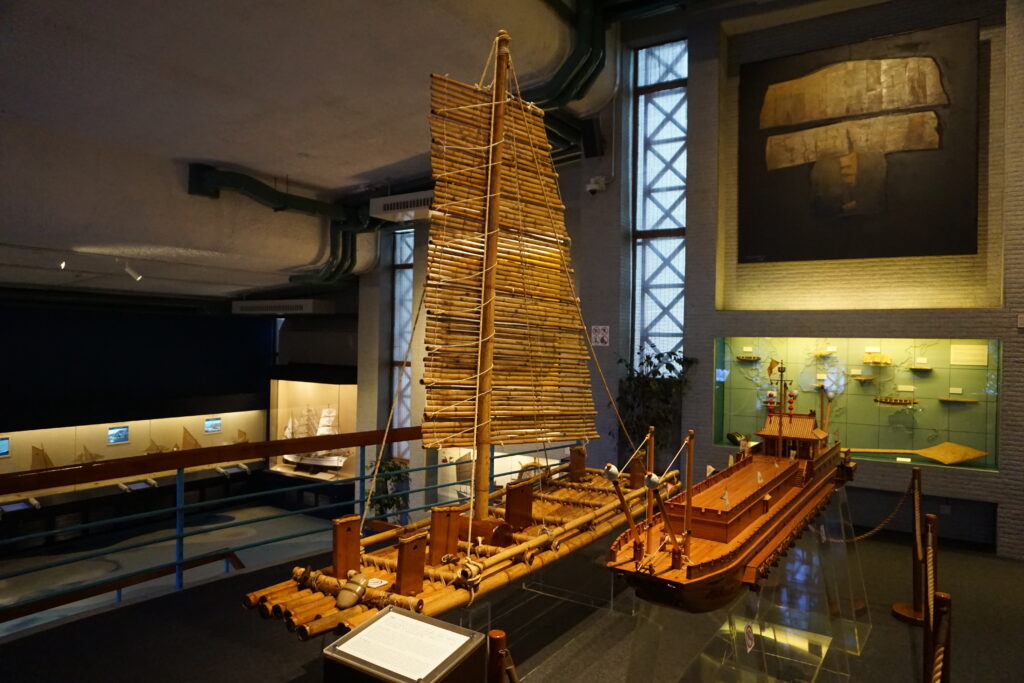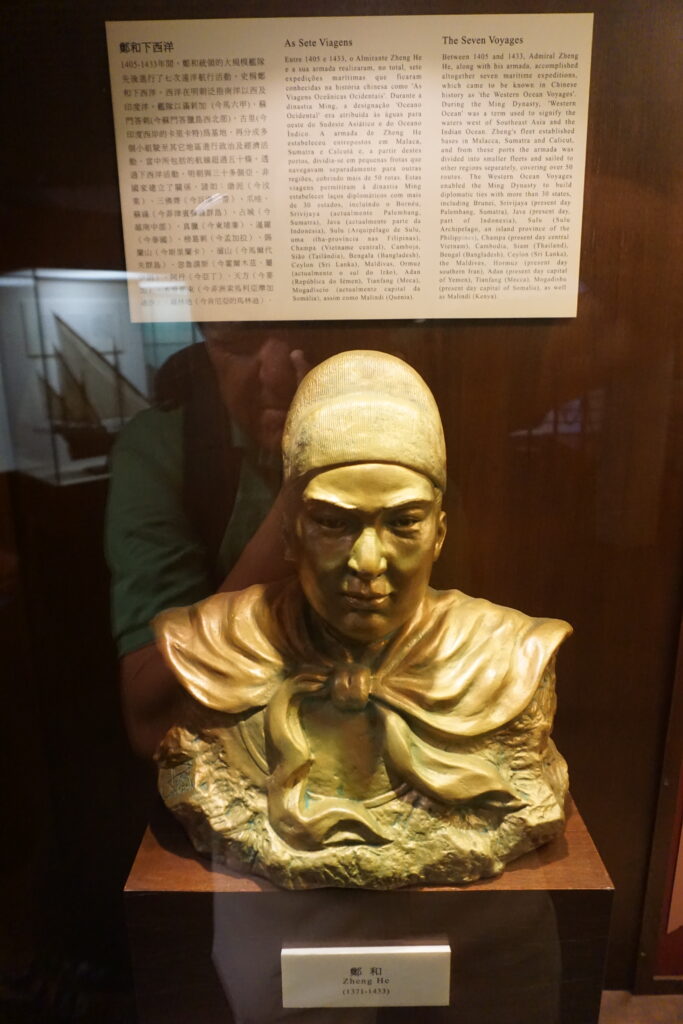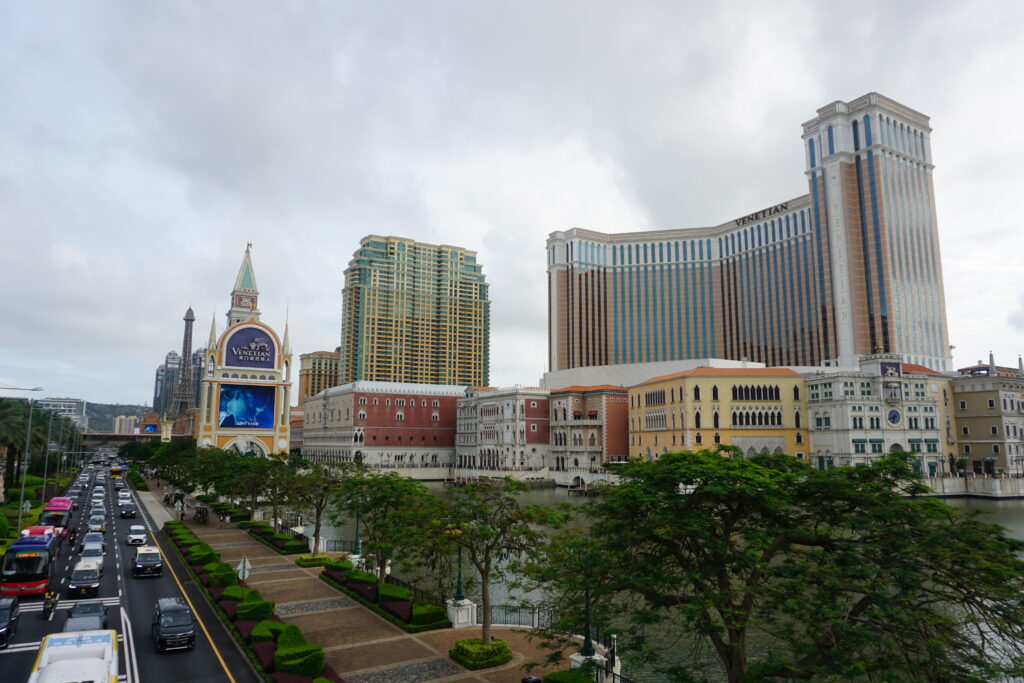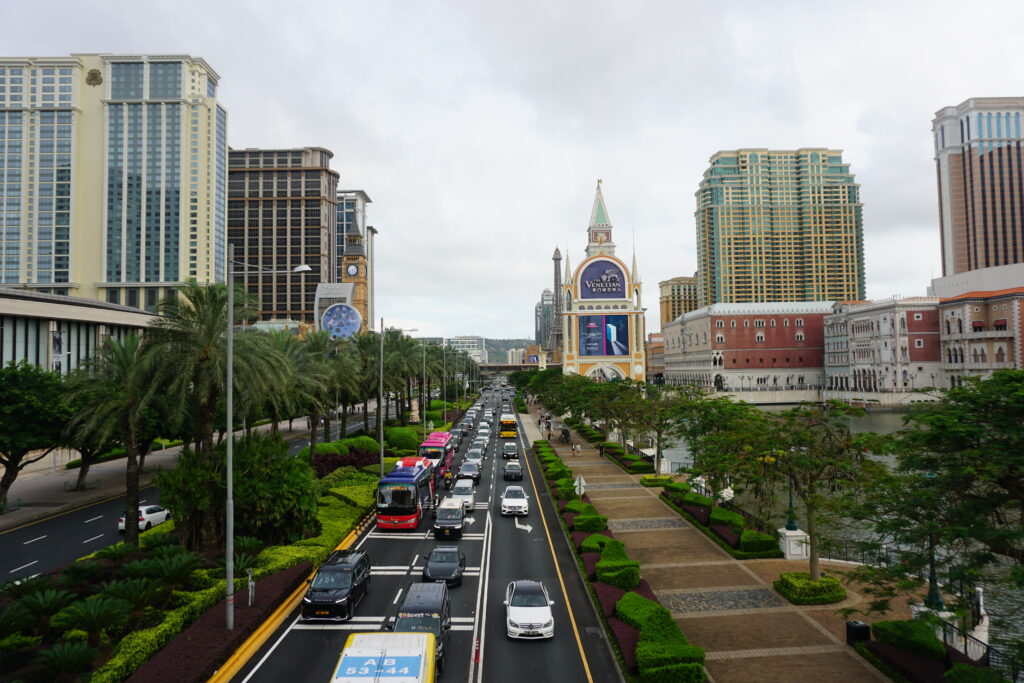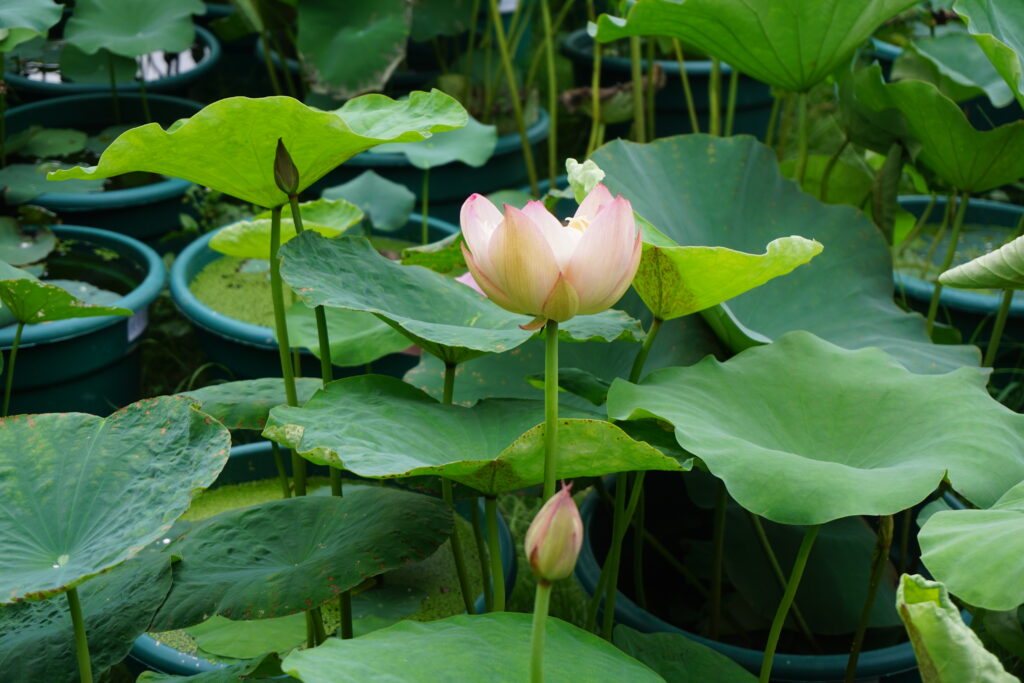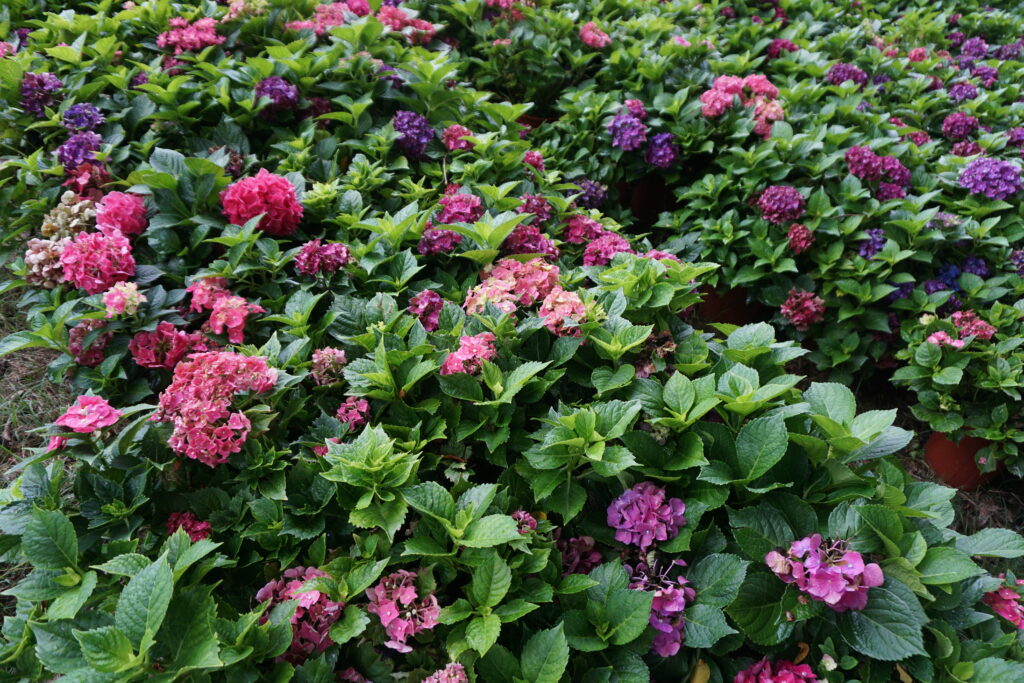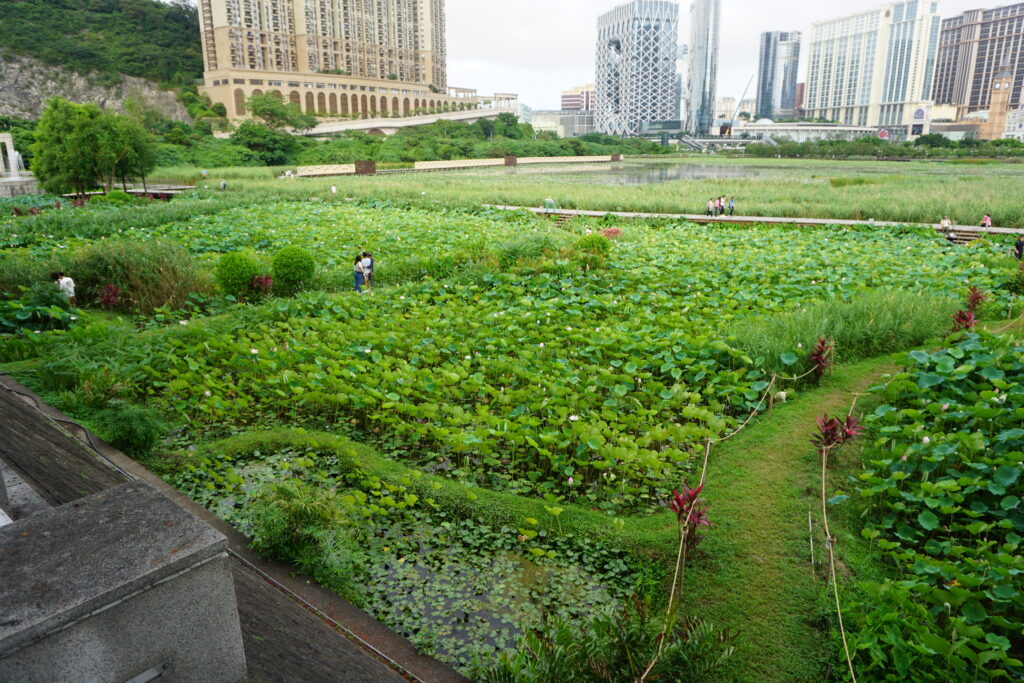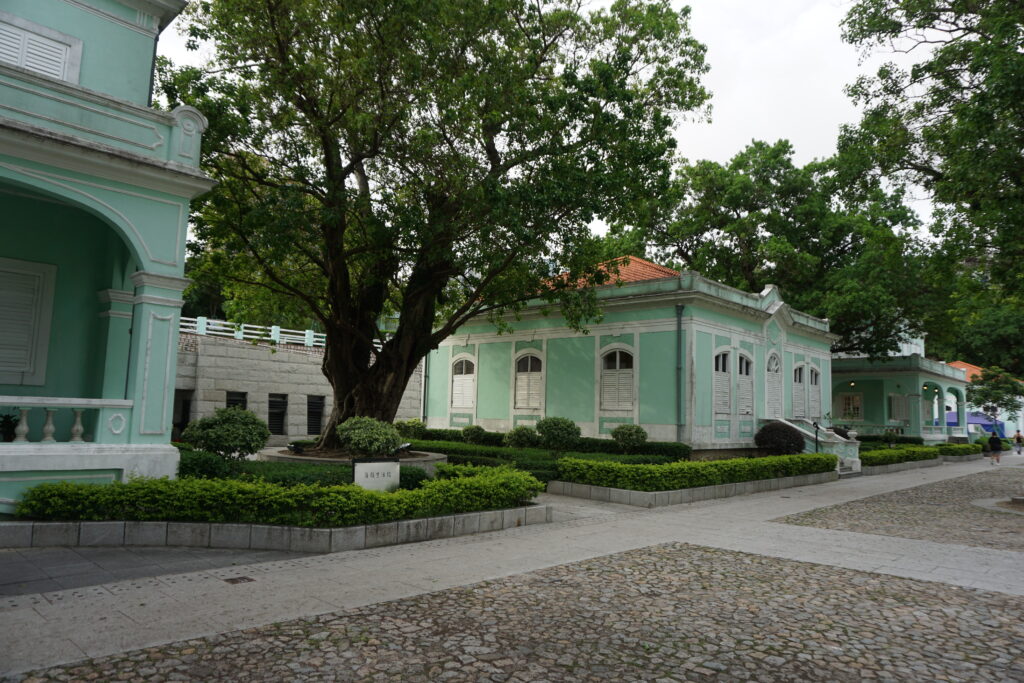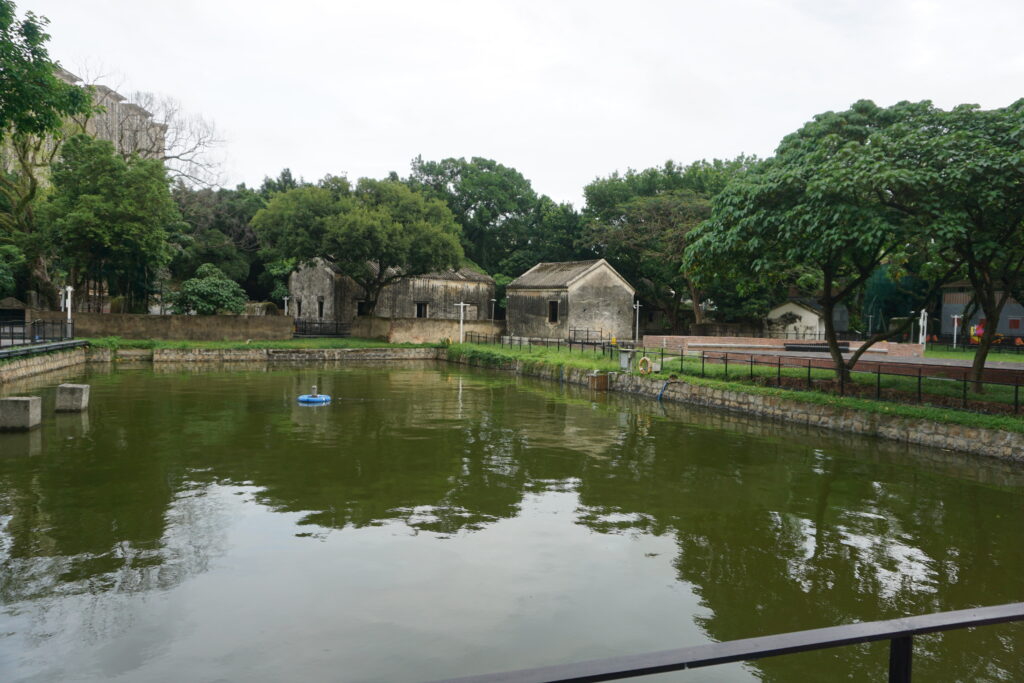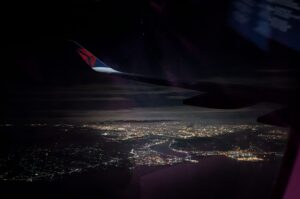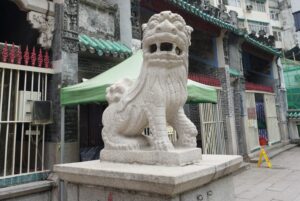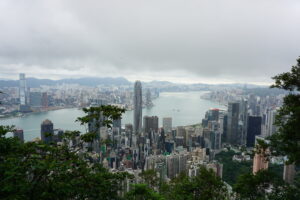Macau
Portuguese Las Vegas... in China
It is just a ferry ride to Macau from Hong Kong. The place is small enough it can be seen in a day trip, so I left all of my things in the hostel one morning and took public transportation over to the ferry. You have to pass through immigration to go to Macau from Hong Kong or mainland China, but the process is not too long, and before mid-morning, I was in Macau.
There remain many signs of Portuguese colonial influence in Macau. Most of the signs have Portuguese verbiage as well as Chinese. Many restaurants serve either Portuguese specialties, or a fusion of Portuguese and Cantonese food. Macau has its own currency, called the pataca, a Portuguese name. Macau was Portuguese for over four hundred years. The Portuguese tried to hand Macau back over to China several times during the 20th century, but were repeatedly refused until China finally took sovereign control of the peninsula in 1999.
Macau is known as a kind of “sin city” of East Asia. Gambling is legal, and there are a host of casinos. Prostitution is not legal, but is winked at. Compared to China, Macau is a place where almost anything goes. Like Hong Kong, Macau retains a lot of the freedoms and autonomy it had under colonial rule, even after reverting to Chinese control. And, like Hong Kong, China effectively treats Macau like a foreign country, making travelers pass through immigration going to and from the place.
I first went to Fortaleza Guia. On a hill overlooking the harbor sits a fort begun by the Dutch when they attempted to wrest control of the colony of Macau from the Portuguese. The Dutch never had time to complete the fort, and their efforts to seize Macau ultimately failed. In order to make it more difficult for future raiders to capture the city militarily, the Portuguese built upon the Dutch foundations to make a more formidable defense for the peninsula. The Portuguese improvements were constructed in the 1620s and 1630s. There is a chapel located there as well, and a much later lighthouse which has historically towered over the downtown area and created an iconic feature of the Macau skyline.
I ascended the small hill and wandered the park-like setting snapping photos of the colonial buildings, and the surrounding views. Fortaleza Guia was mostly empty the morning I visited. The small chapel is relatively plain. There are several signals on display in the fort as well, that were used to communicate the degree of danger from incoming typhoons and tropical storms. The buildings had been used as a weather station in the earlier part of the 20th century. The fort was an interesting stop, but not even the largest or most important Portuguese post in Macau. I also planned to walk over to Fortaleza do Monte, the larger and older fort.
En route to the larger fort, I walked past a downtown garden dedicated to Vasco da Gama. Da Gama himself never reached Macau. After the fall of the Eastern Roman (Byzantine) empire in 1453, overland trade to India and the Far East became far more perilous. By the early 15th century, the Portuguese had already been feeling out along the African coast for a sea route to India. While the Spanish tried to solve that problem by sailing West, the Portuguese were looking East. Vasco da Gama proved in the 1490s that India could indeed be reached by sailing around Africa. As a result, the Portuguese set up forts and colonies all along the African and Indian coasts. Caleb and I visited Portuguese forts in Oman. Goa was Portuguese until the 1970s. I saw another Portuguese outpost in Bahrain later in the trip.
So the statue of Vasco da Gama, and the garden dedicated to him in downtown Macau commemorates not a personal visit by da Gama, but rather pays homage to his importance in the establishment of a Portuguese trade empire that indeed had a huge footprint even in China and Japan later on. This all led to Macau being a trade outpost, though Portuguese presence here was not established until 1544. Da Gama’s grandson, João da Gama did pass through Macau, but not until the latter part of the 16th century. The park itself is surrounded by tall buildings and almost feels obscured by the surrounding urban growth.
(Continued)
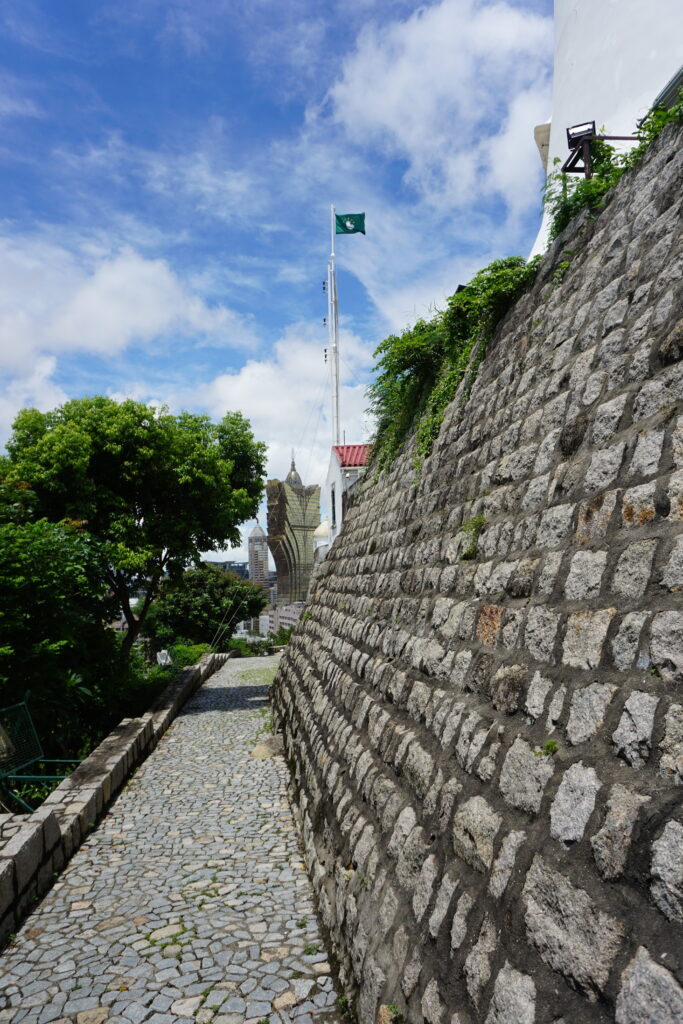
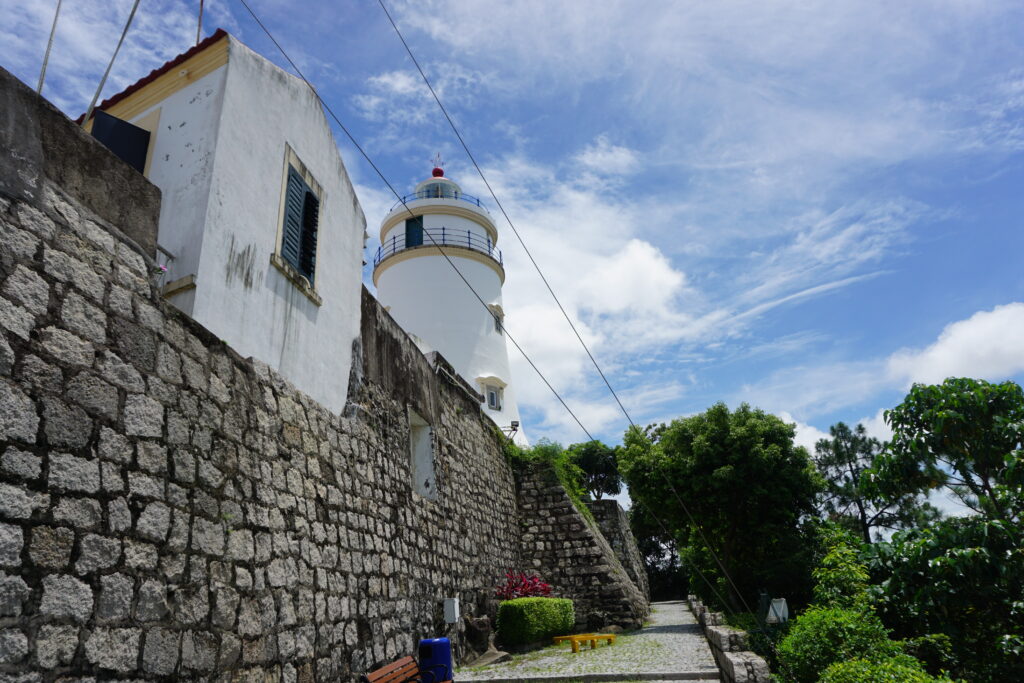
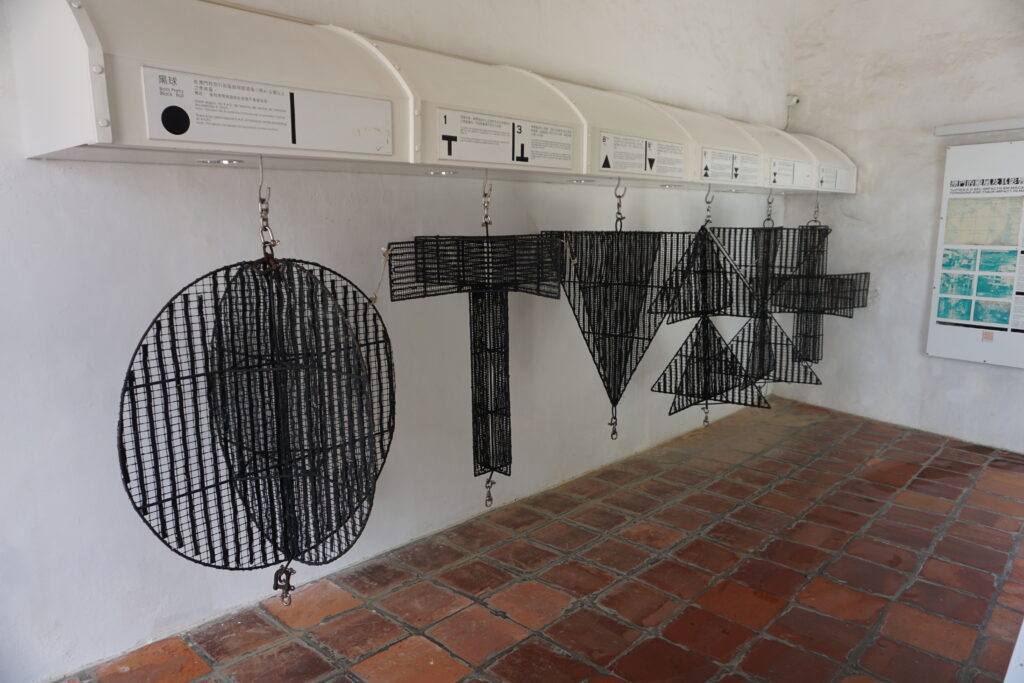
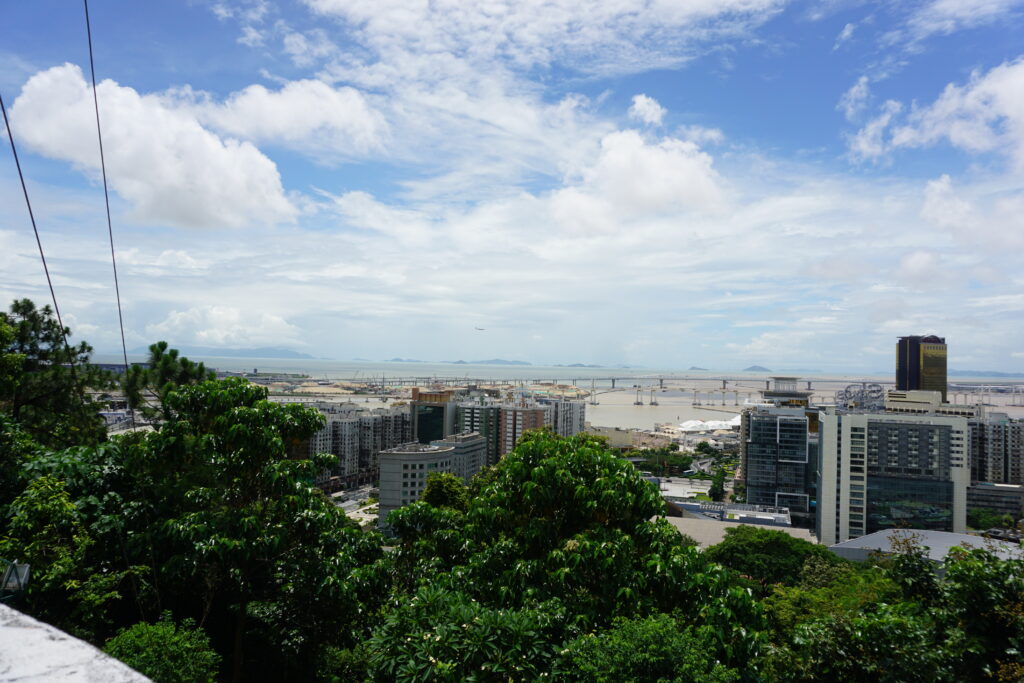
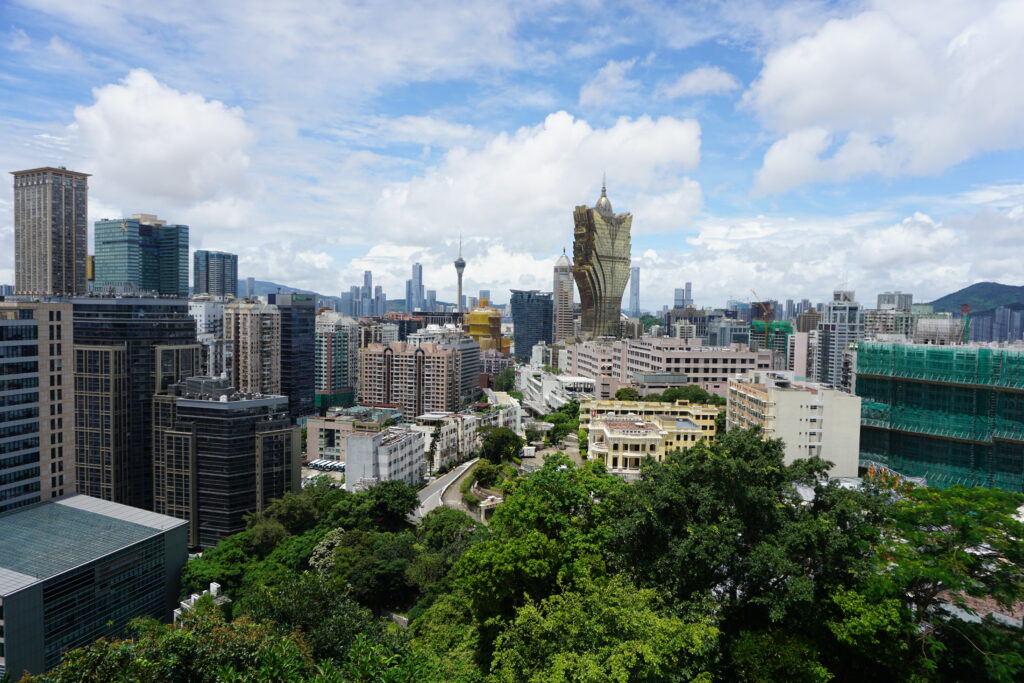
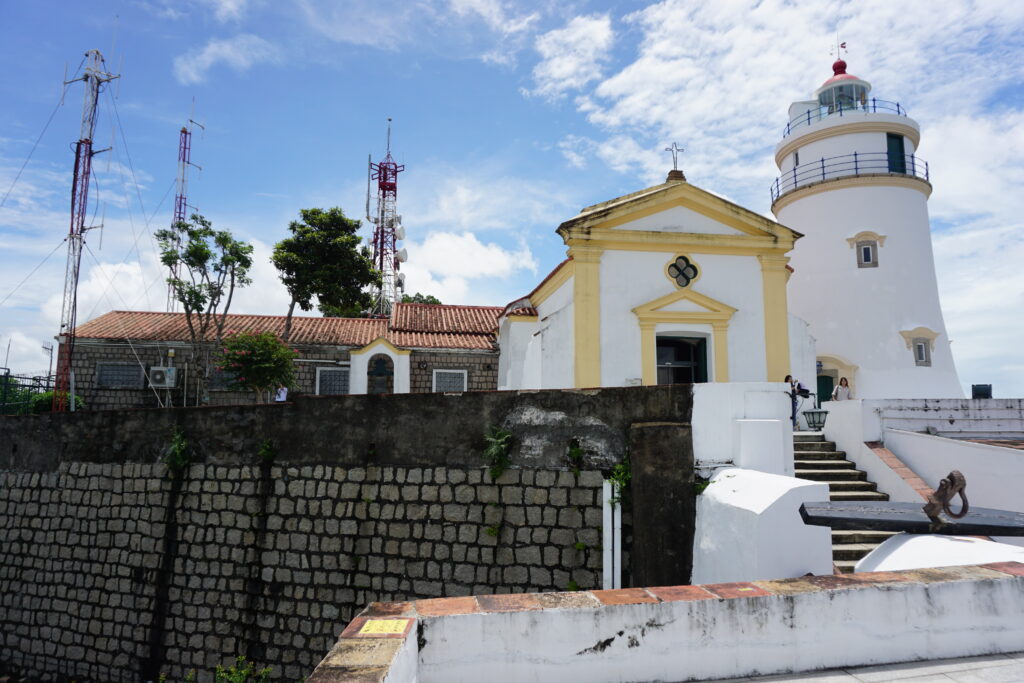
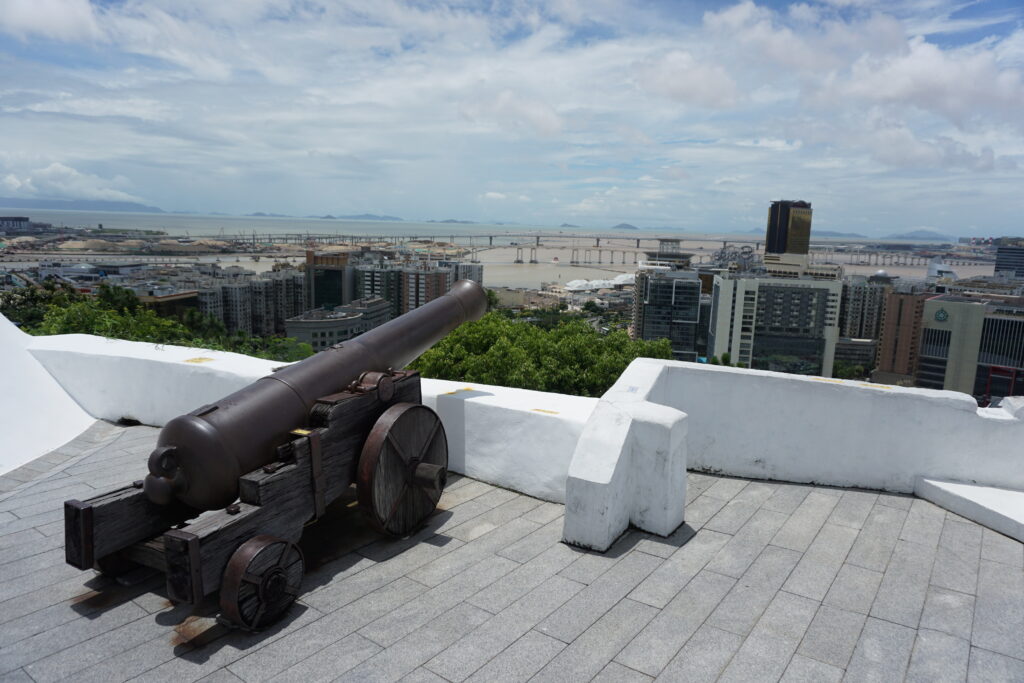
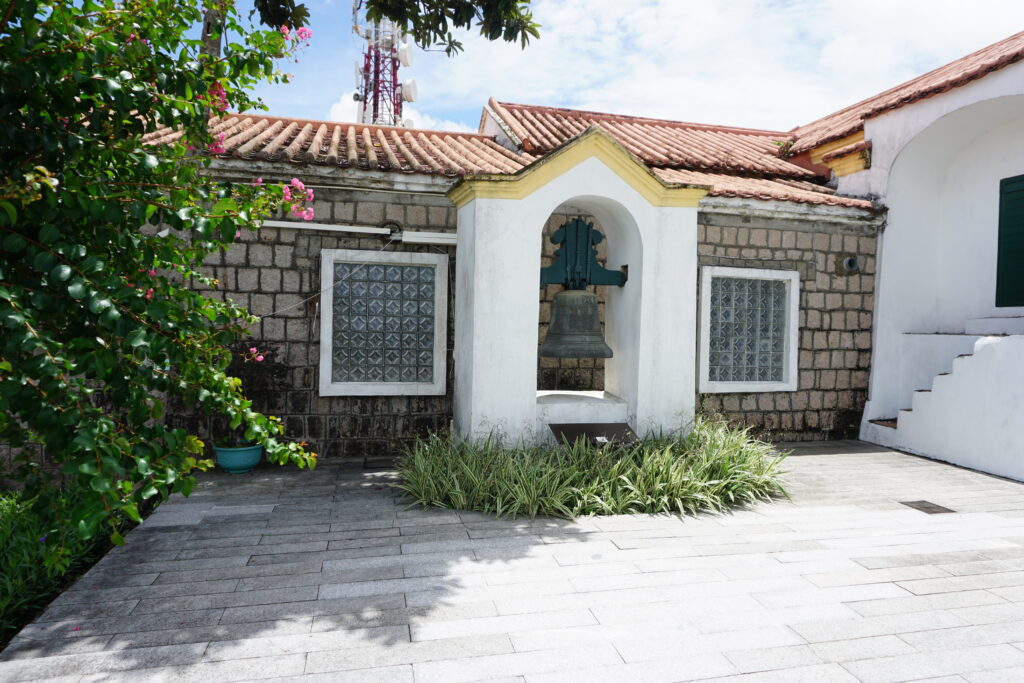
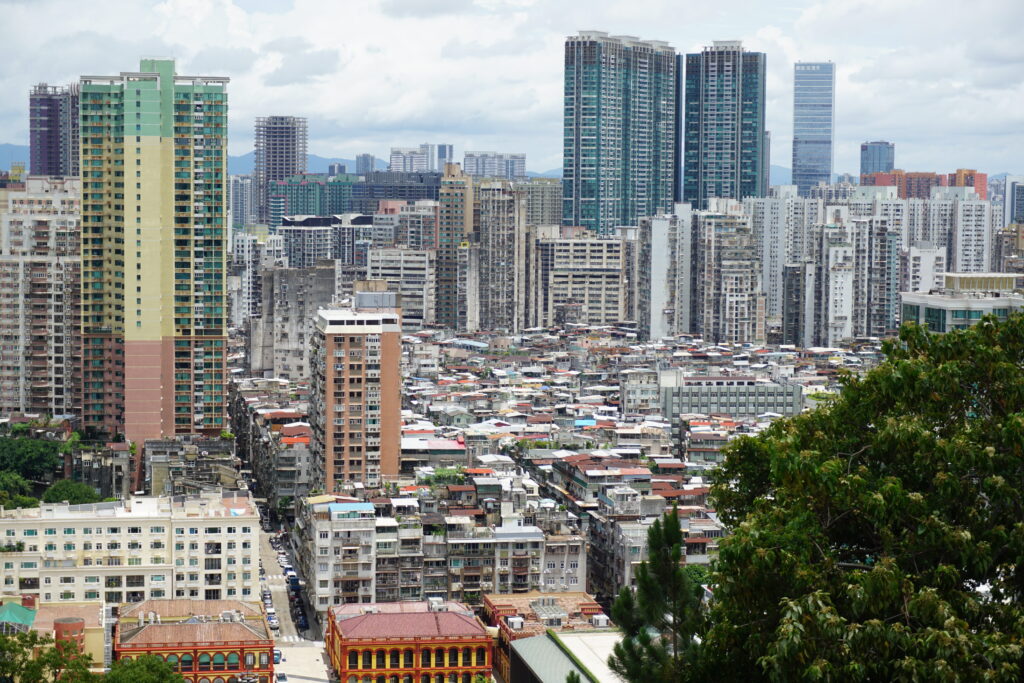
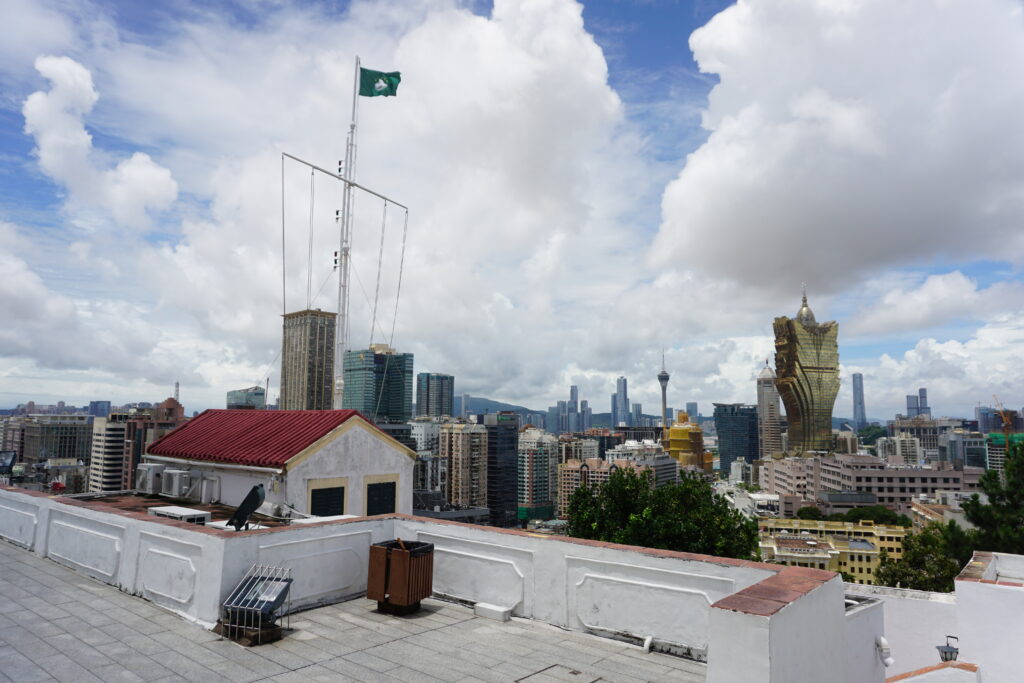
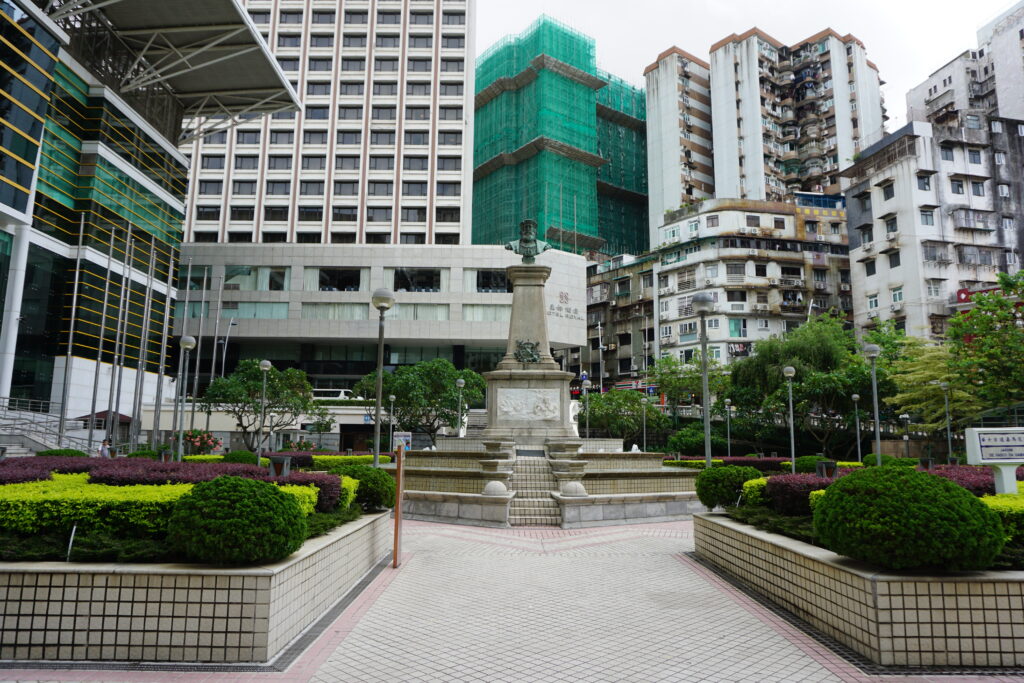
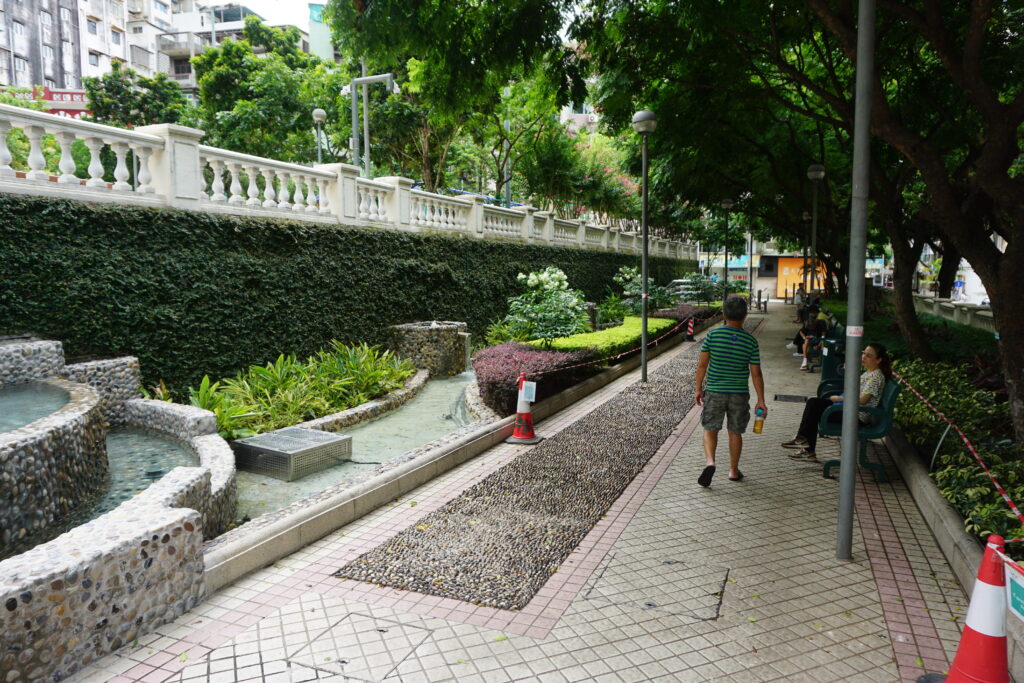
The Fortaleza do Monte is atop an even higher hill than Guia. It, too, offers nice views of the city. There were quite a few more tourists at this site, many of them snapping selfies and posing for shots overlooking the city skyline. It was at times difficult to capture good shots between ladies posing for glam shots.
Constructed in the 1610s and 1620s to protect the property of Portuguese Jesuits from pirates, the fort later served as a residence for the governor of Macau. The site covers about two acres and was home to about 32 cannons. It proved crucial in holding off the attempted Dutch takeover of the peninsula in 1622. The fort remained a defense or law enforcement institution until the latter part of the 20th century. A weather observatory in the interior was torn down and the Museum of Macau put in its place in the 1990s, and the fort was eventually opened up as a public place open to visitors.
I walked around the Museum of Macau a bit for the air conditioning, but didn’t stay too long. It is small, and there was still a lot to see outside. I walked over to the ruins of St. Paul’s cathedral, which is just next to Monte Fort. St. Paul’s Cathedral was once a massive church, one of the largest Catholic churches in Asia. Constructed by Jesuits, the building was begun in 1602. Most of the labor was provided by Japanese converts to Catholicism. The remains of the church itself convey a lot of information about the history of Macau.
Jesuits arrived in Japan in the 16th century and had made significant headway in converting locals, especially on the Southern island of Kyushu. The feudal authorities in Japan had mixed feelings about Western influence, and were often suspicious of Christian conversion efforts. In 1587, Toyotomi Hideyoshi – a kind of “acting shogun” – banned Christianity and expelled the Jesuits. Their converts fled with them to places like Macau where they built this church.
The influence of these Japanese Christian builders is obvious in the art depicted on the facade of St. Paul’s. The arguments going on in broader Christianity in the 16th and 17th centuries are also well represented, from a very Catholic perspective. The church was originally “Mater Dei,” Latin for mother of God. Those words are visible in the remains of the church facade. Protestant challenges to Catholicism criticized the worship of Mary. The Jesuits who had this church built wanted to protect and emphasize the Mary cult. Mary imagery is very prominent in the art they used.
In Latin America, Catholicism is often blended with local customs and traditions to form a uniquely local, syncretistic form of the religion. At St. Paul’s, Mary is depicted stomping on a Chinese dragon, giving a distinctly eastern flavor to the tradition of her smashing the seven heads of the hydra (representing deadly sins). There are Chinese guardian lions as well. So as you look at the old face of the church, you can see Jesuit builders emphasizing the things about Catholicism they felt were under attack, and also the uniquely oriental flavor added to those traditions by Japanese converts creating the Mary-centric art.
Christians faced persecution in China as well as Japan. Many converts and missionaries suffered or lost their lives for their faith. The small museum created by the Macanese government at the site of St. Paul’s contains many art pieces depicting Christian suffering and martyrdom. There are also relics and artifacts on display from those who suffered for Catholicism. The art seems to have been created to venerate the martyrs, to proclaim the nobility of suffering for the cause, as well as to show sympathy for those sufferers still dealing with persecutions at the time. This persecution was another part of that long tale of European and Asian cultures interacting in Macau.
From St. Paul’s I walked through Senado Square, the town square at the heart of old Macau. I was hungry by then, and it was kind of late for lunch. Knowing Macau is a tourist destination, I figured it might be difficult to find an inexpensive lunch. I searched out a cafeteria type place where it looked like locals and workers were eating. It was on an upper floor above a local market. It was just what I was looking for. I grabbed a cheap but tasty lunch, and continued my explorations.
(Continued)
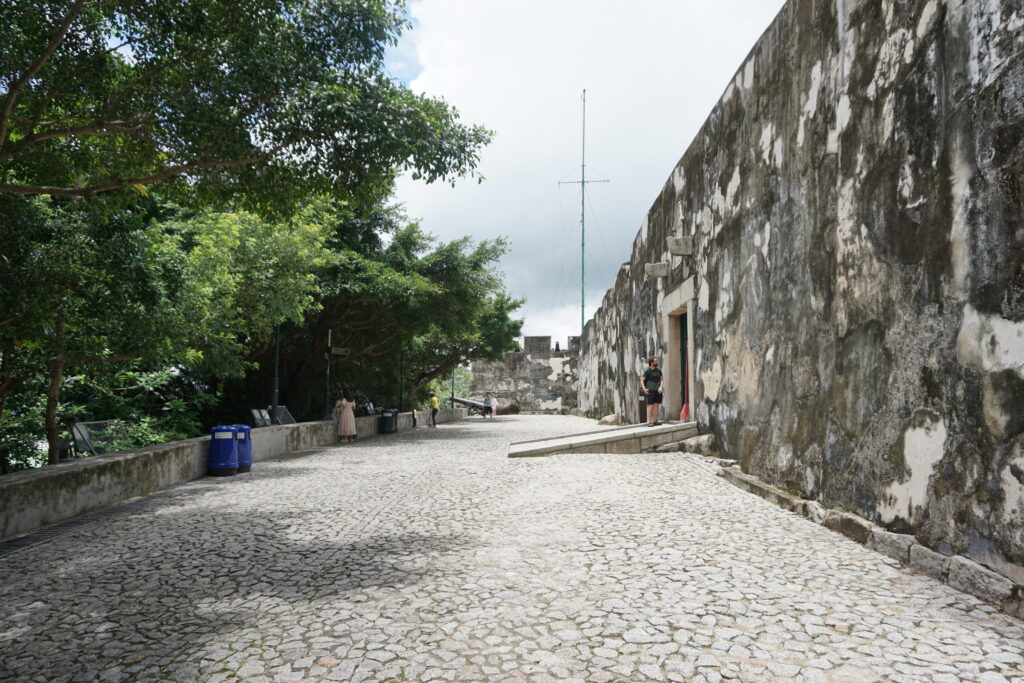
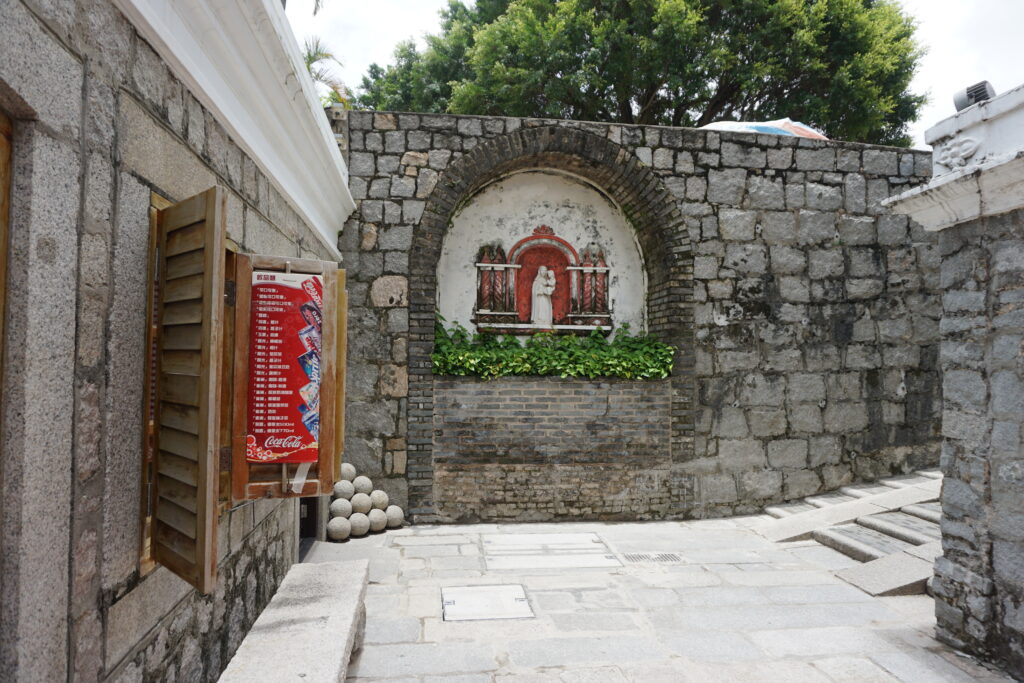
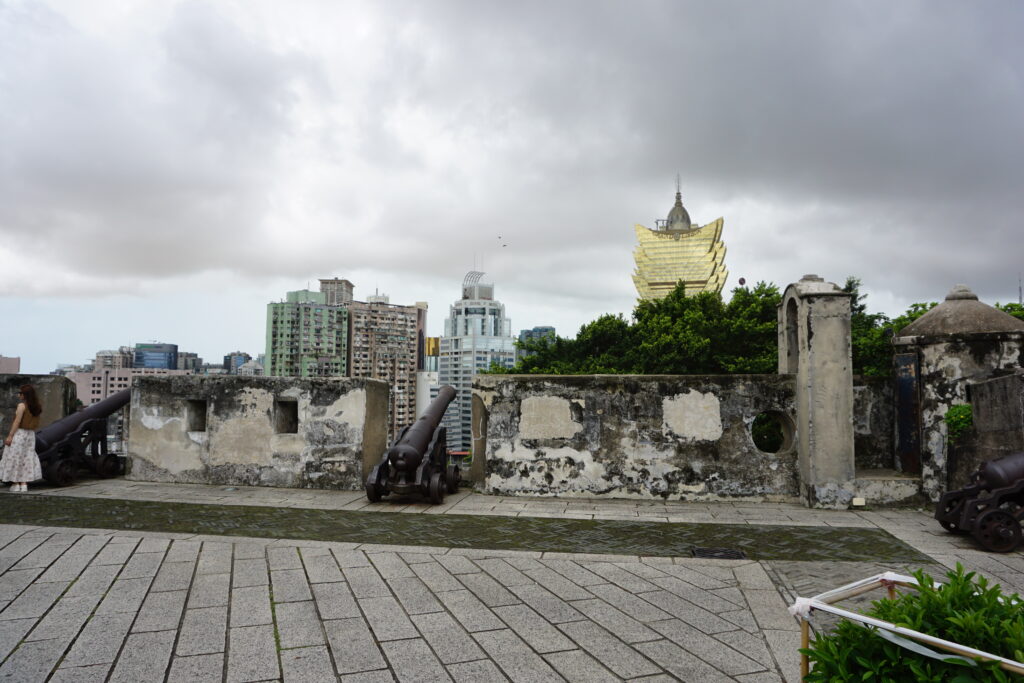
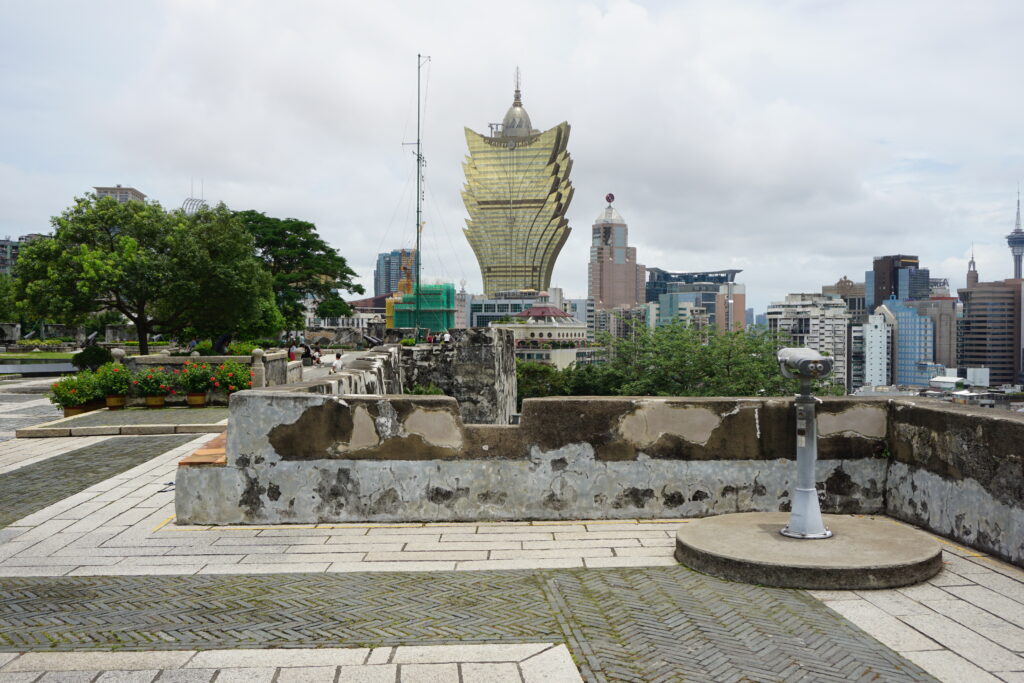
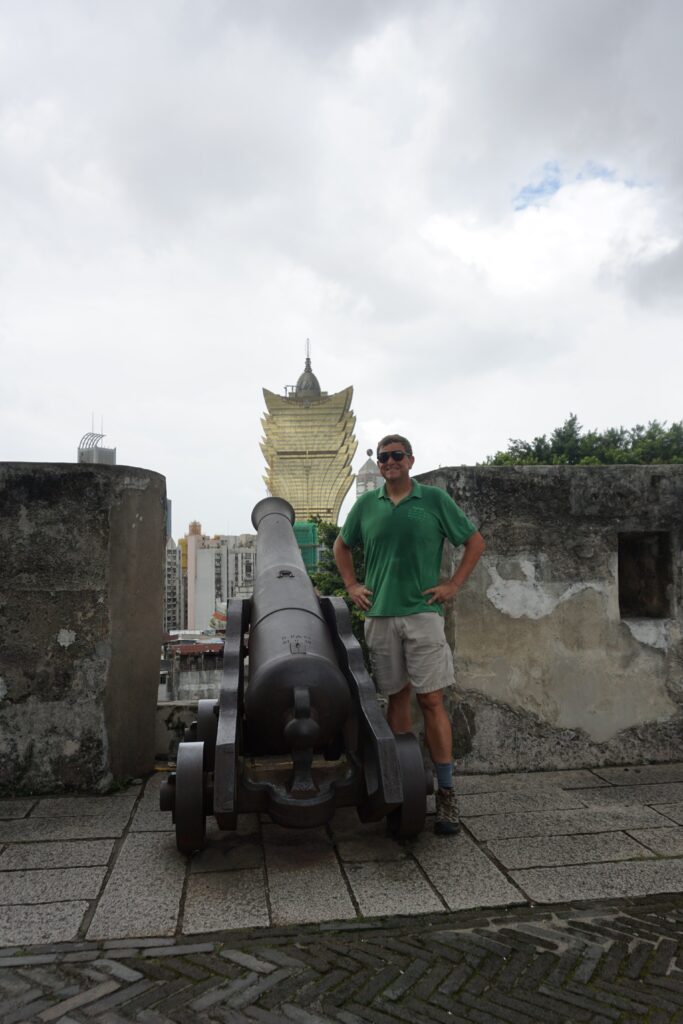
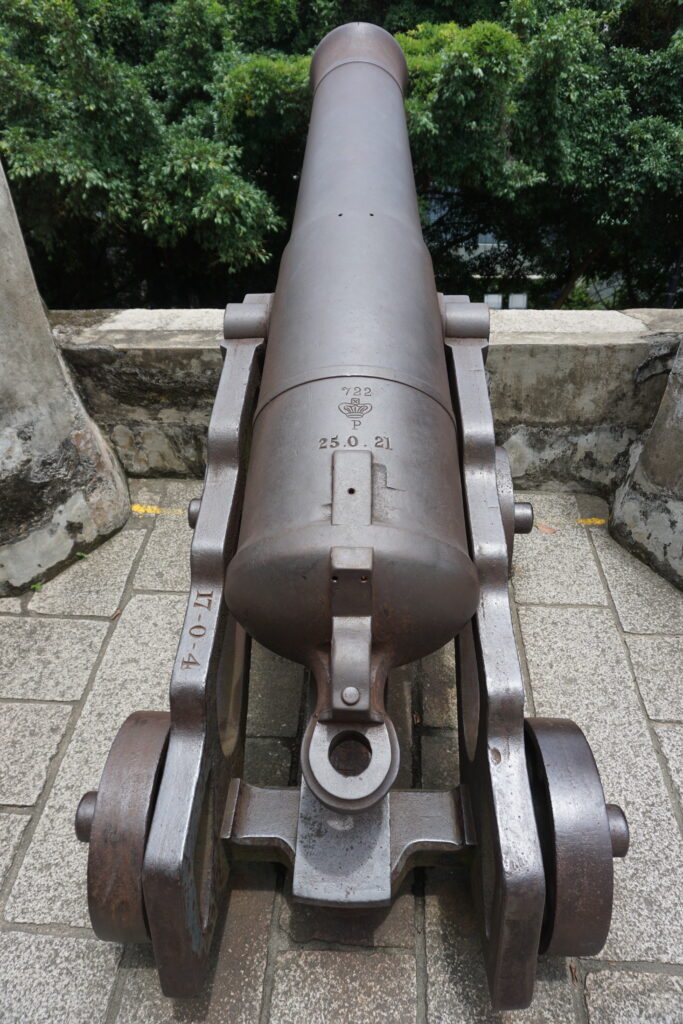
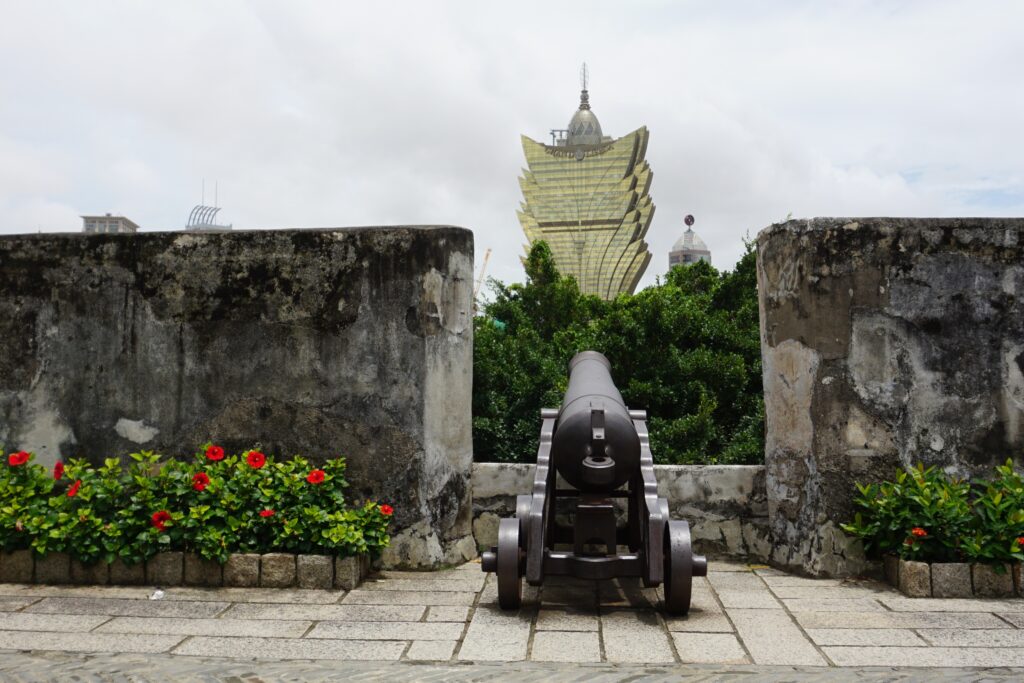
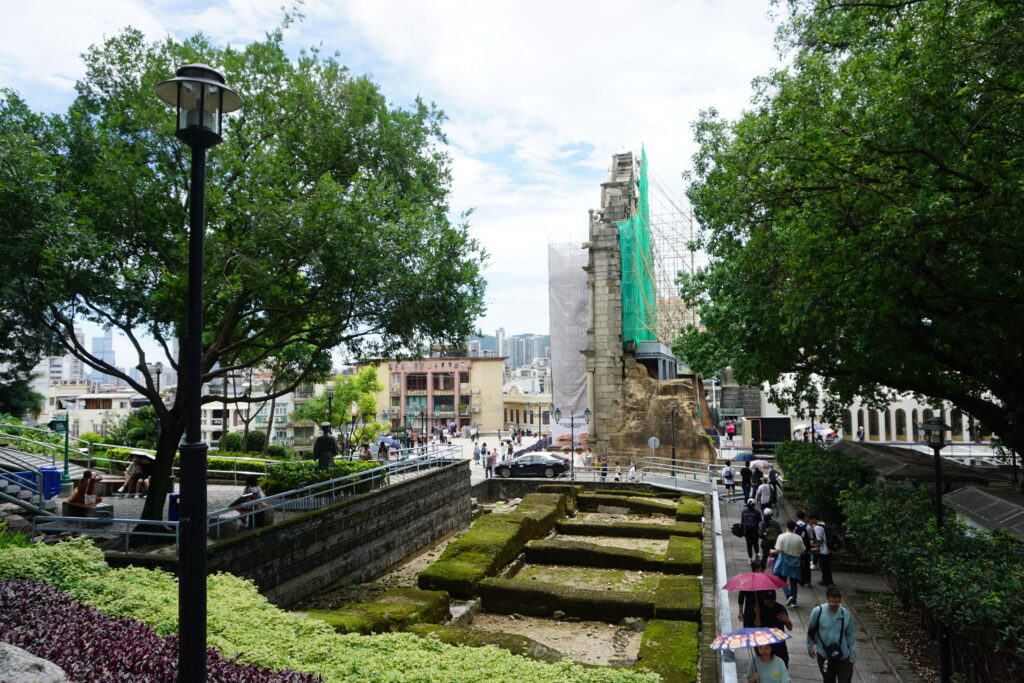
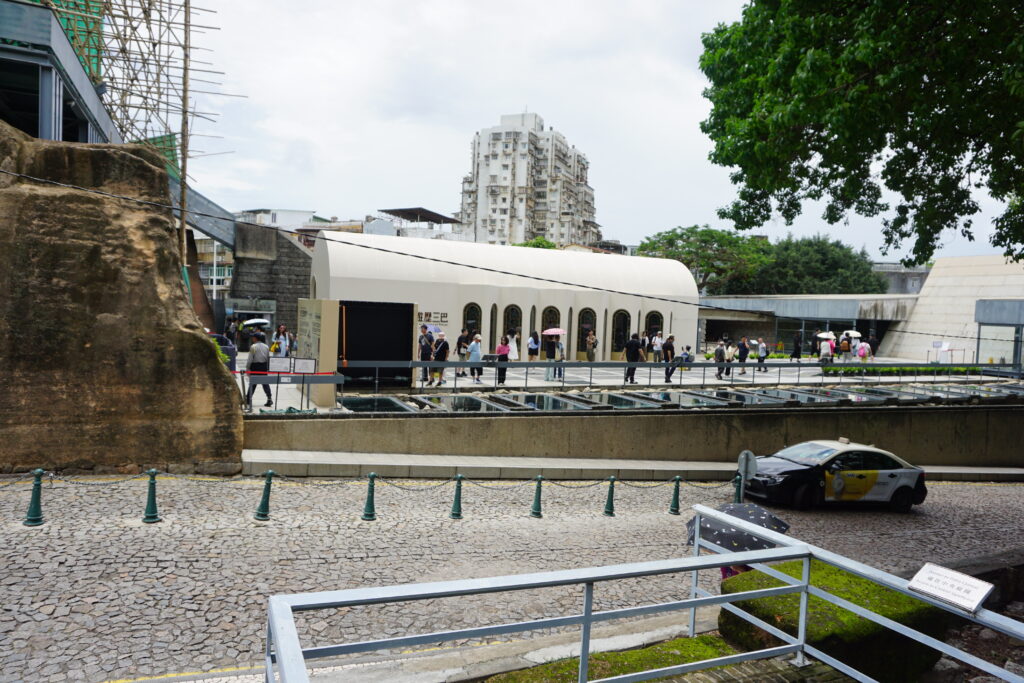
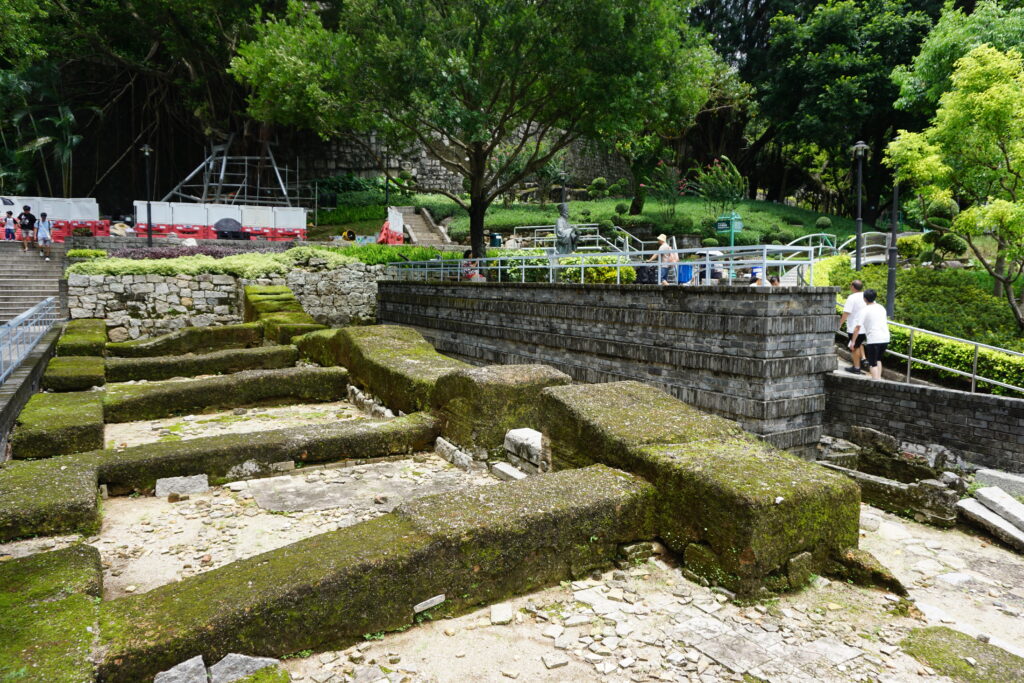
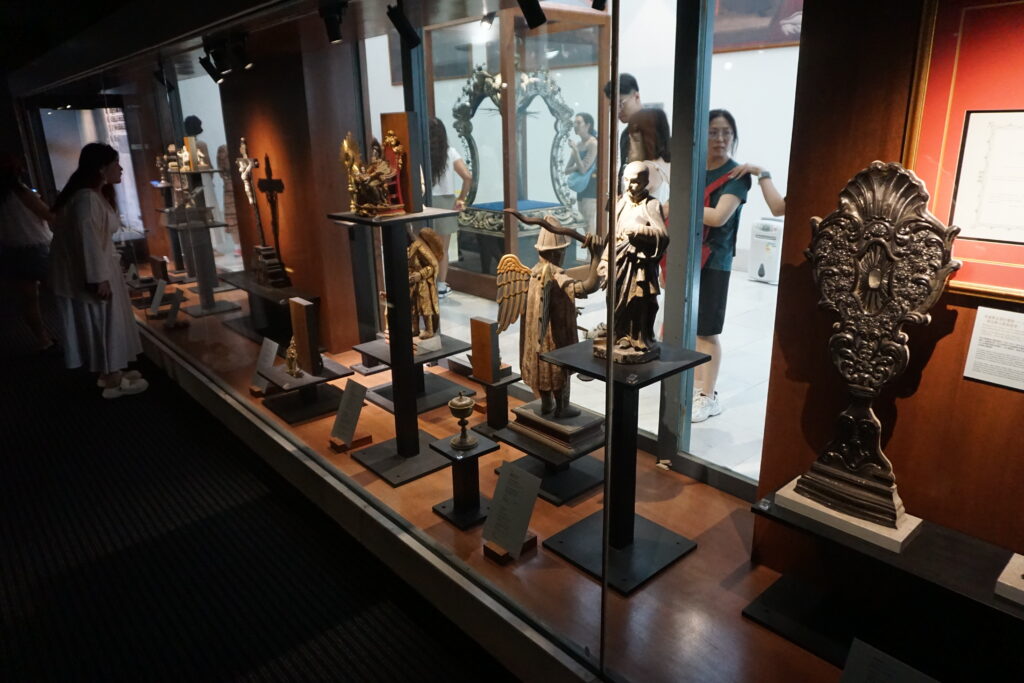
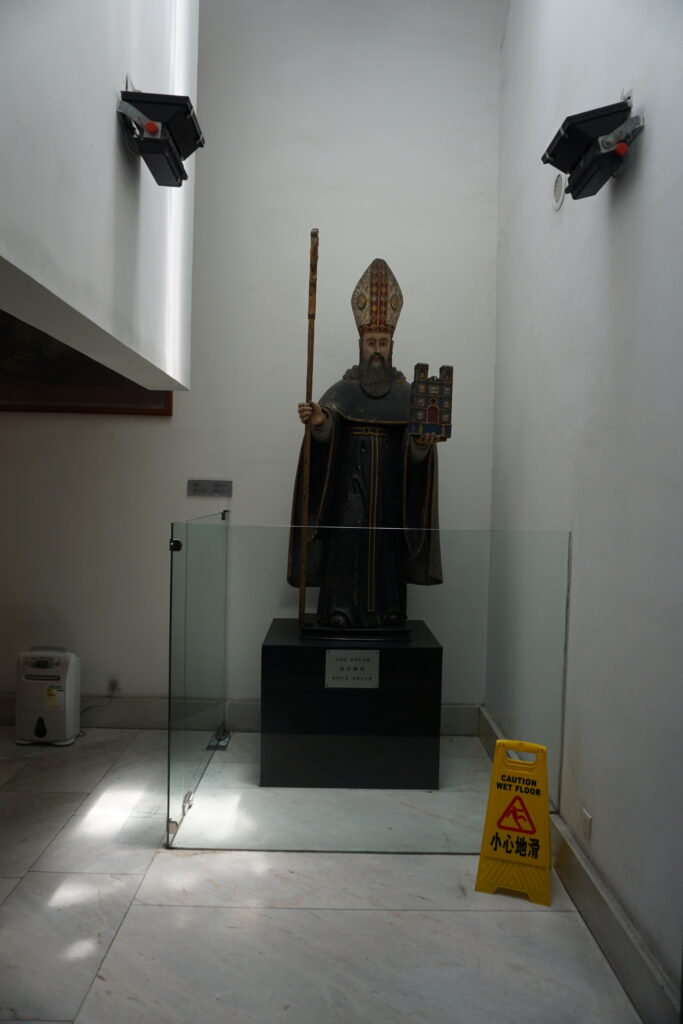
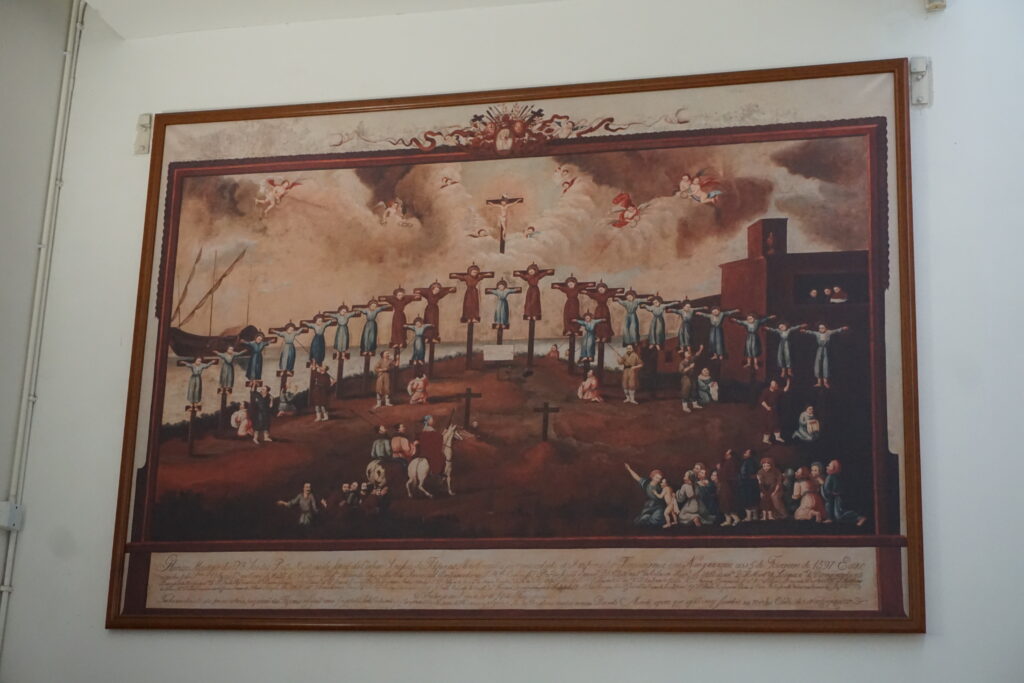
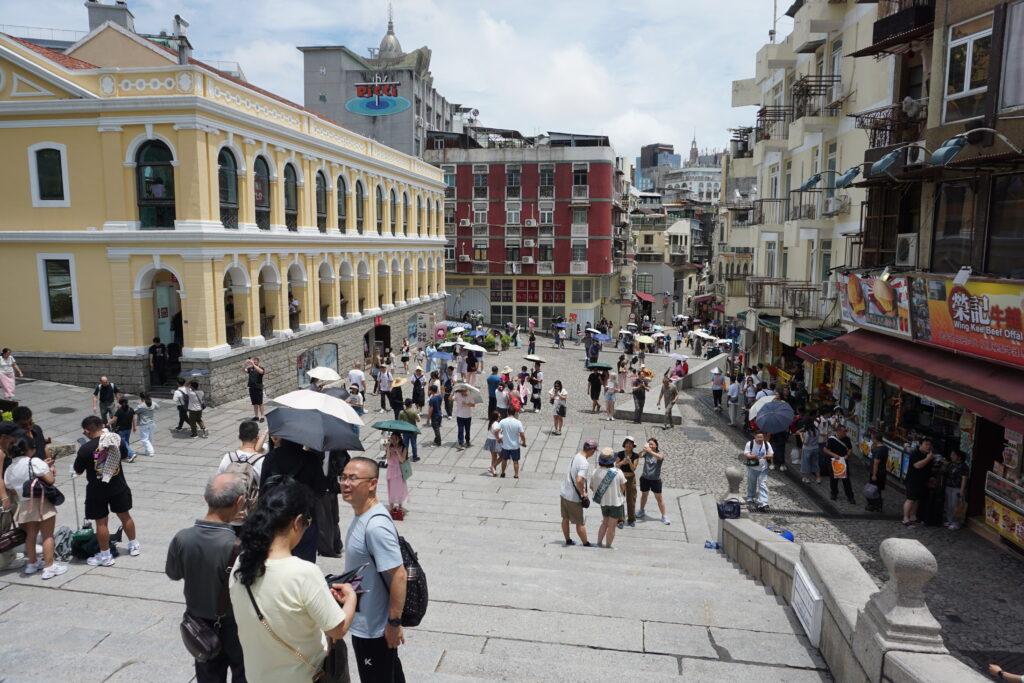
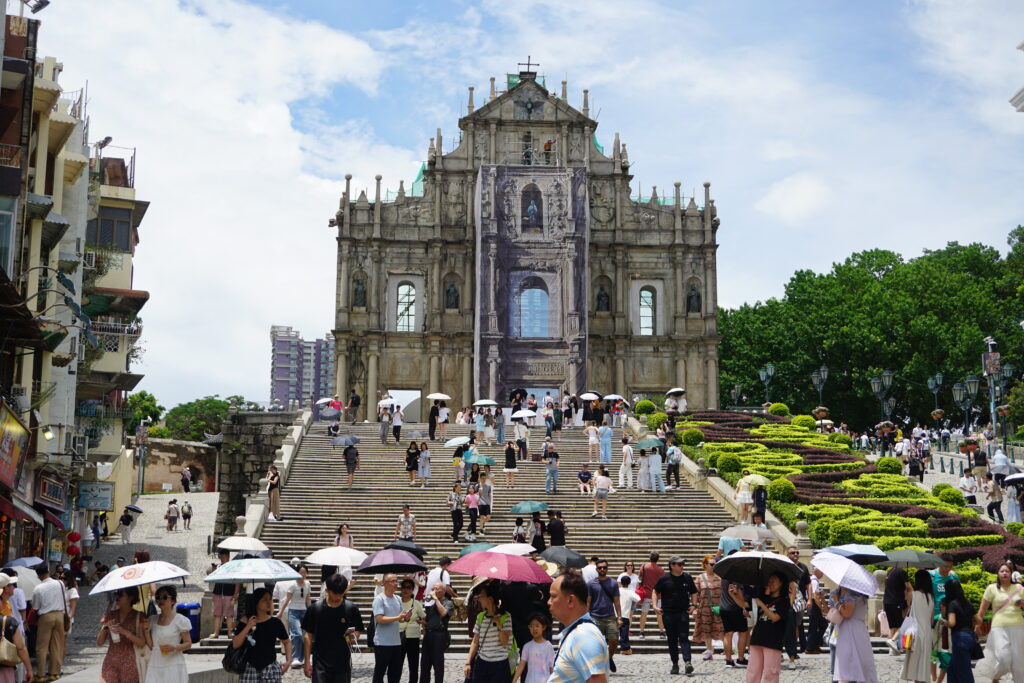
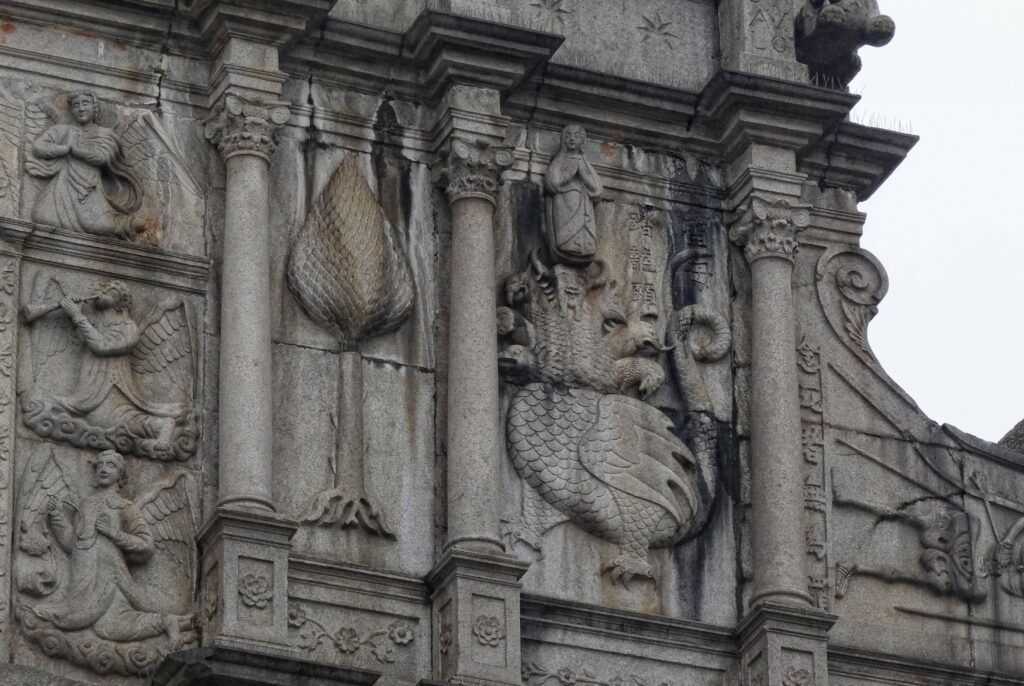
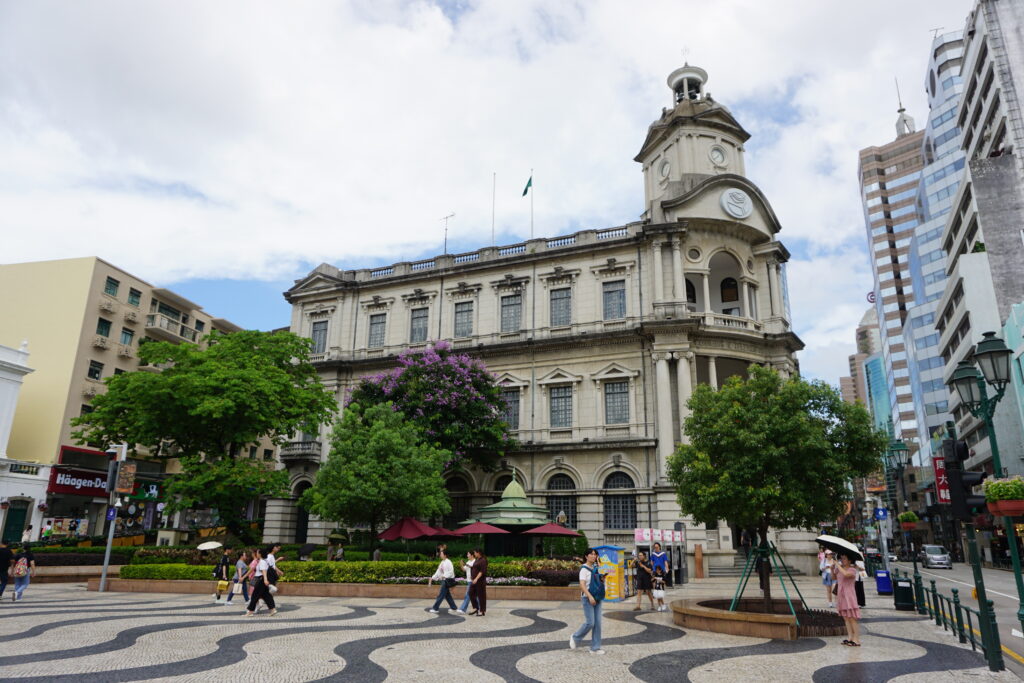
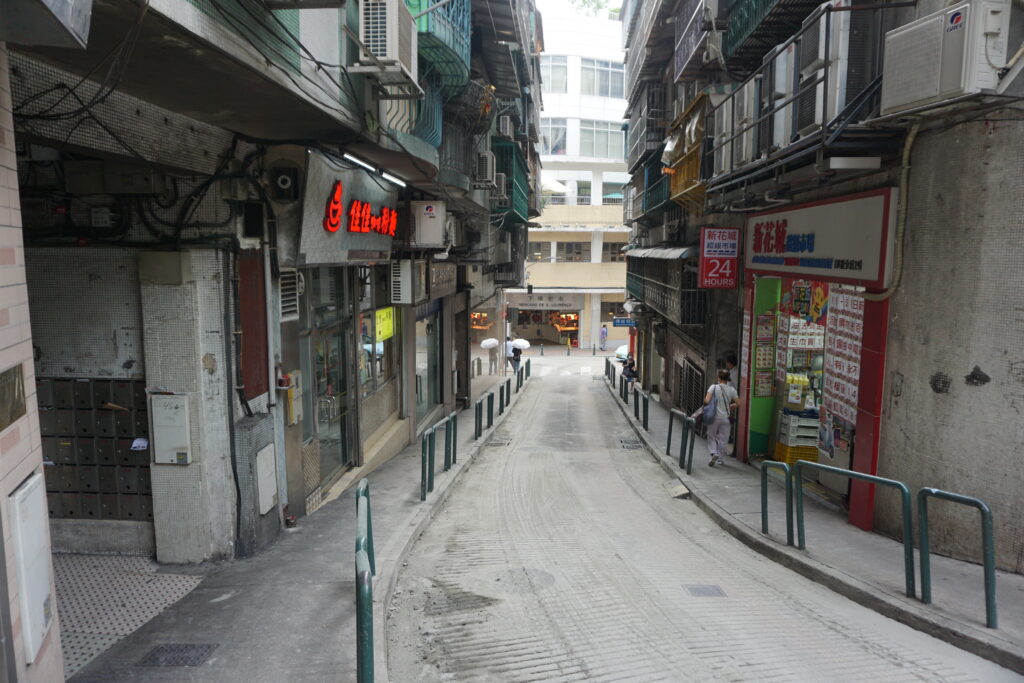
I did not have much interest in visiting Macau’s famed casinos. Most of them seem like pale knockoffs of their counterparts in other parts of the world. I did walk by the area en route to Taipa, which was my next destination. Before reaching the Taipa, though, I passed A-Ma Temple. A-Ma is almost certainly the oldest temple in Macau. It was built in 1488, and is probably Macau’s namesake. When Portuguese sailors arrived and asked the locals the name of the place, they were told it was “a-ma gok,” or “pavilion of the mother.” This temple is dedicated to that same Funian sea goddess Mazu that was often so prominent in Taiwanese temples. The existing facility has several different parts, some now devoted to Buddhist worship as well.
Right across the square from A-Ma temple is a very interesting little maritime museum. I spent some time here, enjoying the excellent air conditioning. There were many nice models representing Chinese ships from before the Portuguese era, and also showing the different stages of technology in Portuguese ship building. The museum had been commissioned by a Portuguese naval officer while that country still controlled the island. Nevertheless, the information presented was well balanced, showing Chinese and Portuguese naval accomplishments. The museum included a large section dedicated to the famed Chinese Muslim admiral Zheng He. Zheng He was a eunuch who commanded treasure trading expeditions on some of the largest wooden sailing ships of the era. He was active in the early 15th century, eventually becoming a high official in the early Ming dynasty and ruling the Southern capital at Nanjing. Some of his treasure ships had crews in the hundreds, were twice as long as other wooden ships of the era, and had as many as four decks.
From the Maritime Museum, I headed out to Taipa. Taipa was an island home to small fishing villages for most of its existence. It had to be reached by a causeway. In recent times, land reclamation efforts have caused it to be no longer and island. The area between the original Macau peninsula and the island of Taipa is now home to all of the casinos. Taipa is a suburban area with many residential neighborhoods today, but there are still areas where you can see the heritage fishing villages and colonial buildings.
Several of the colonial houses have been converted into a small museum. At one time, these houses were the homes of Portuguese colonial officials. They contain photos and a lot of 19th century furniture. It didn’t take long to walk through them. The area is peaceful, if a bit warm and humid. The houses are surrounded by a huge lotus garden. It was nearly time for Macau’s lotus festival while I was there, so some of the plants were beginning to bloom. I sat on the benches overlooking the lotus ponds. It was warm and humid, but I still enjoyed taking in the atmosphere.
I found a small, locally owned restaurant in an old colonial era house in Taipa. It was a bit more expensive than I wanted, but I was able to try some of the special cuisines blending Portuguese and Chinese culinary traditions. The restaurateur was a descendant of both Portuguese and Chinese parents, and was very proud of the great lengths her husband had gone to to preserve their historic building. The food was good, and seemed well worth the added expense.
I concluded my day in Macau by walking through a small park that had once been a fireworks factory. After its heyday as a fishing village, Taipa was once a giant in the fireworks industry. At one time, there were as many as five fireworks factories in Taipa. The Iec Long factory I toured was open from 1925 to 1984. I strolled around boardwalks over waterways that doubled as fire prevention and septic system. I made my way to different buildings adorned with placards describing the process and dangers of assembling the fireworks. It was interesting, if not the most aesthetically spectacular thing I had seen during the day.
Once I finished looking at the fireworks plant, I walked over to a ferry pickup point conveniently located at Taipa. It made a stop on the main Macau peninsula before crossing the bay back to Hong Kong. It had been a busy day, but I was satisfied I had seen the historically significant parts of Macau. One day was busy, but adequate for visiting Macau. It was time to go back to Hong Kong for the night, to prepare for a final day of exploring that city.

